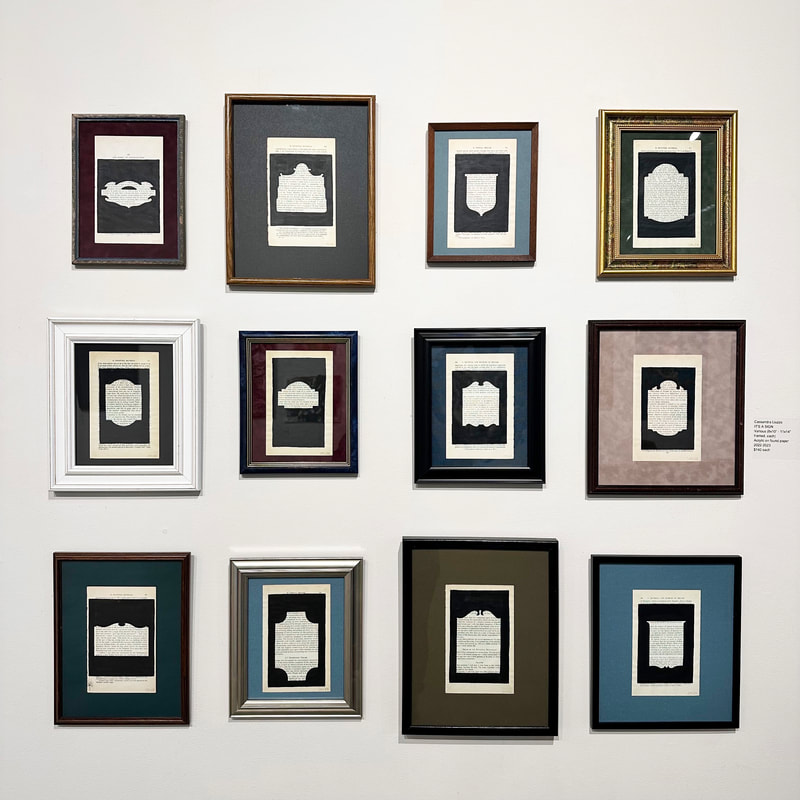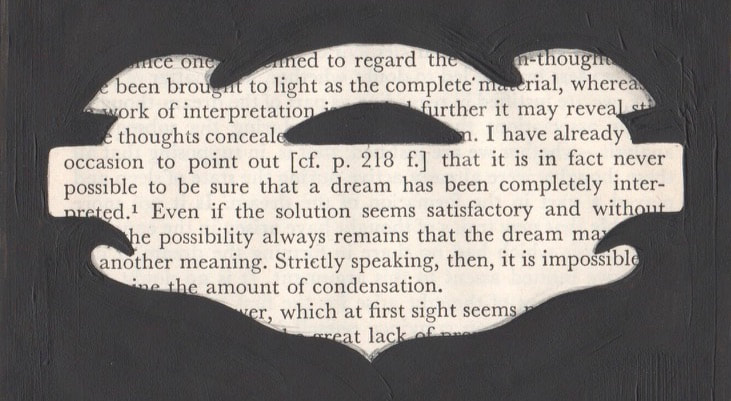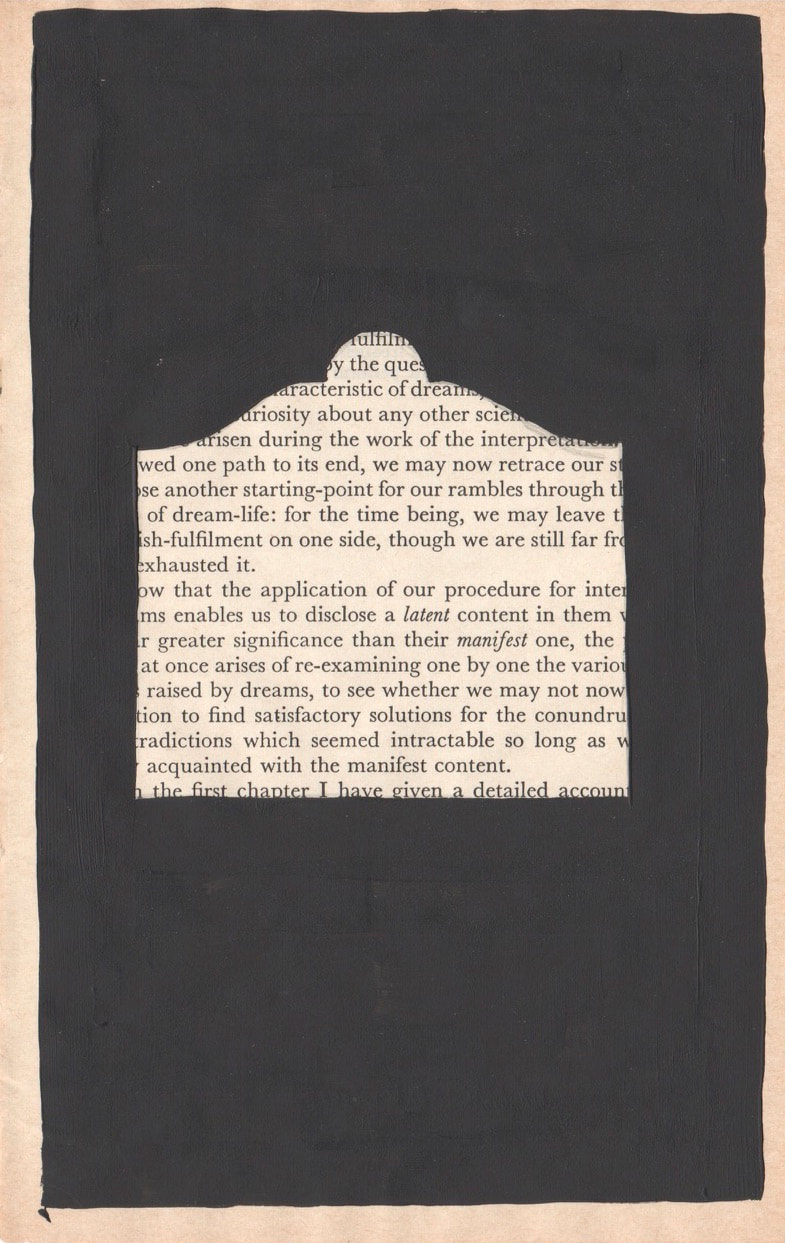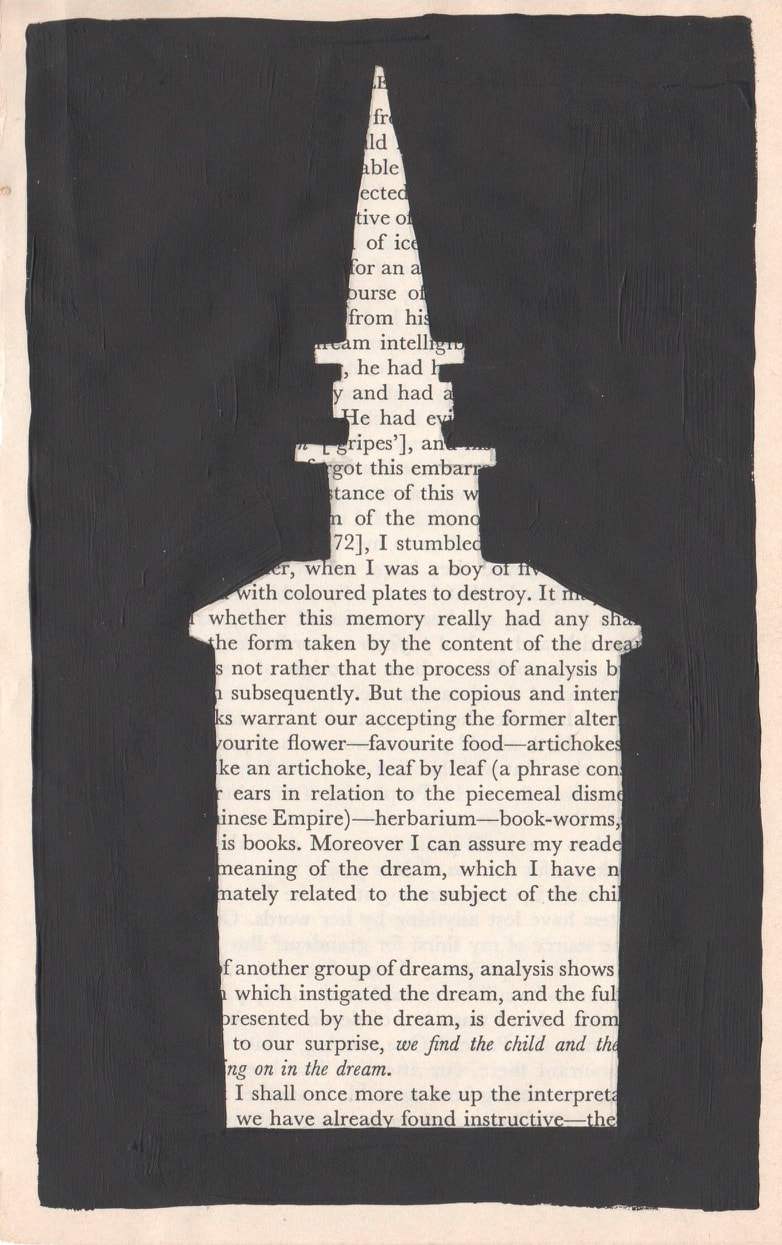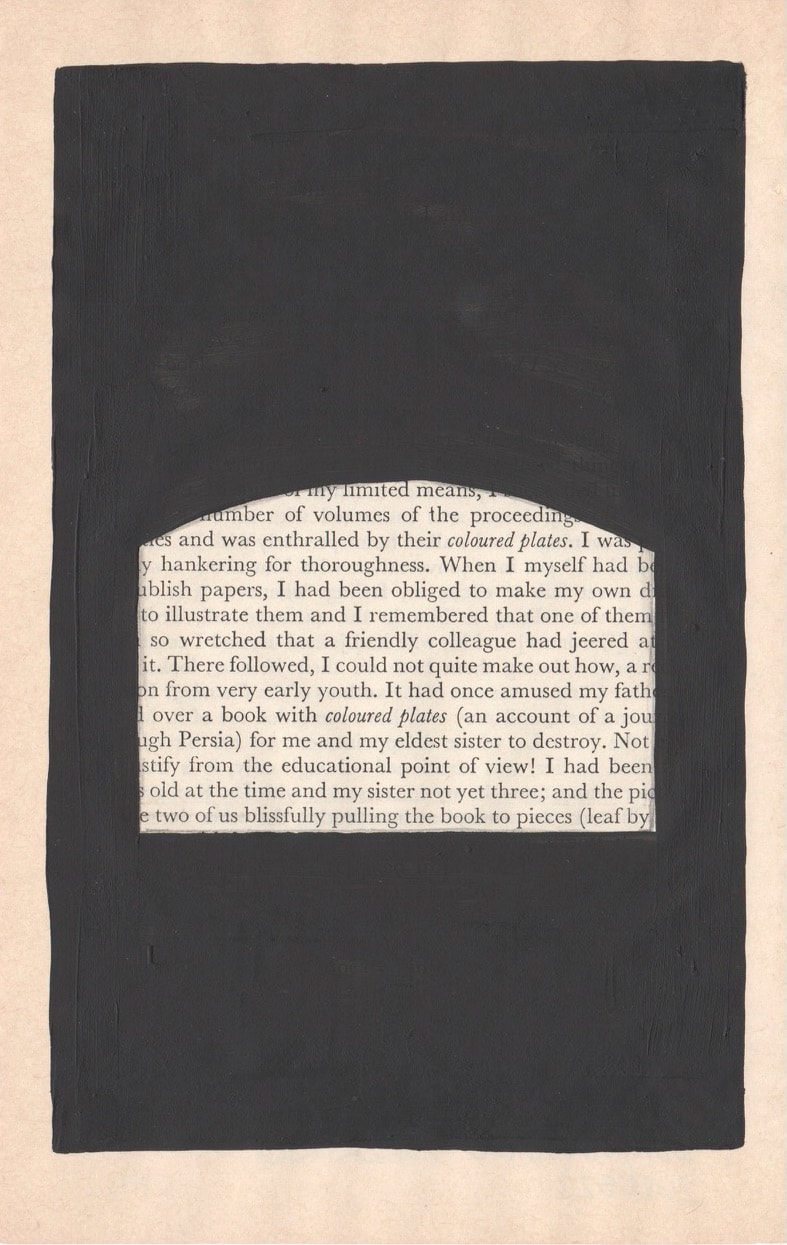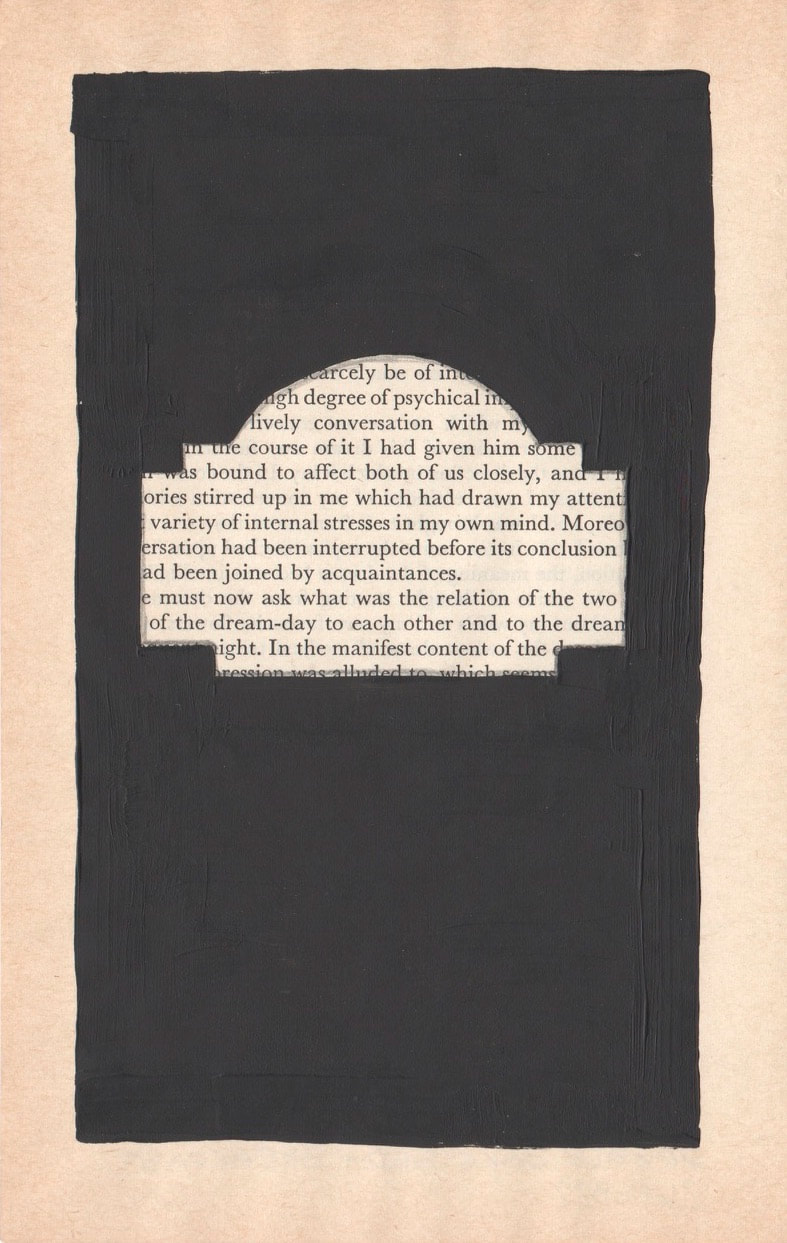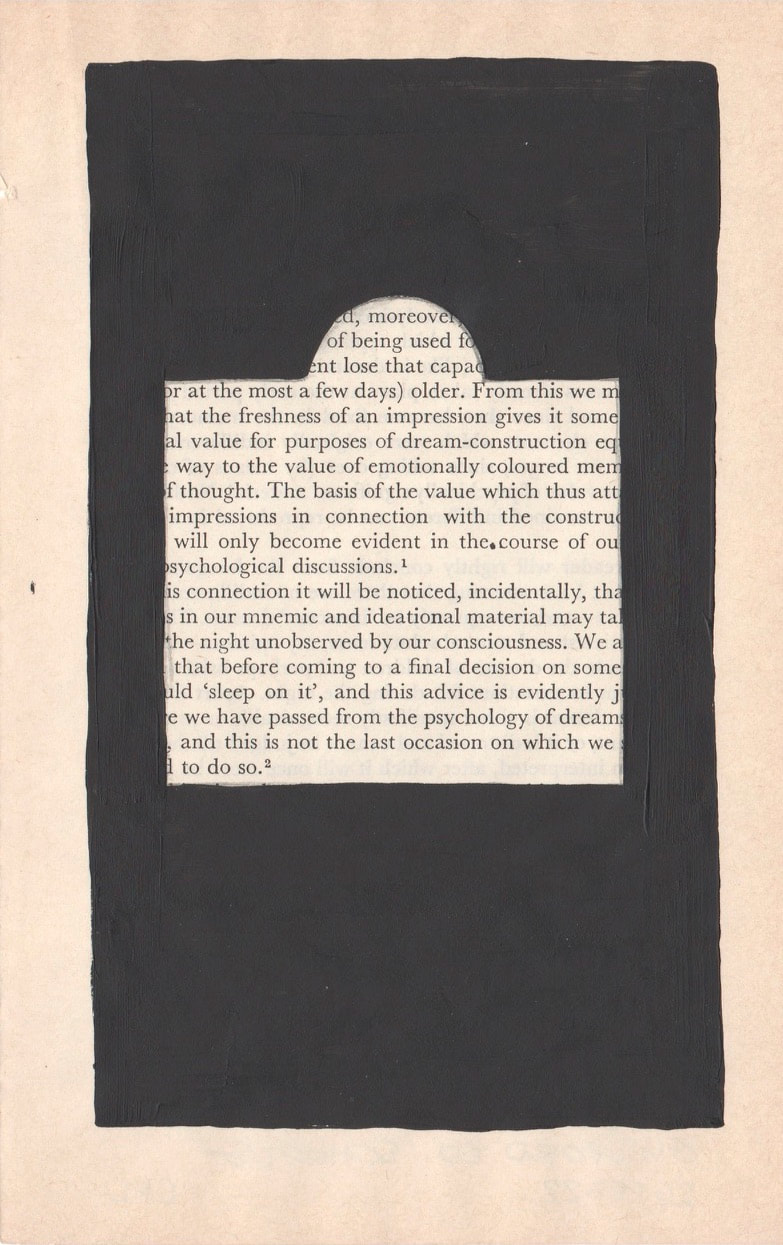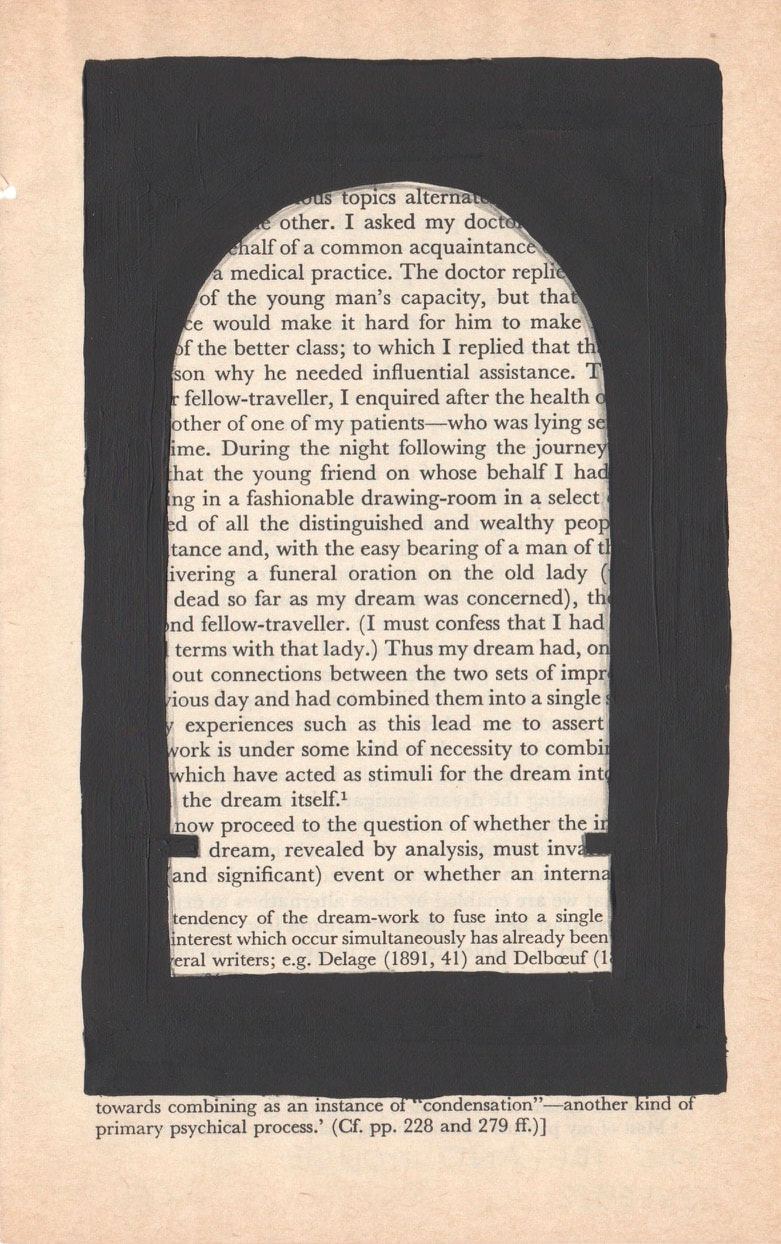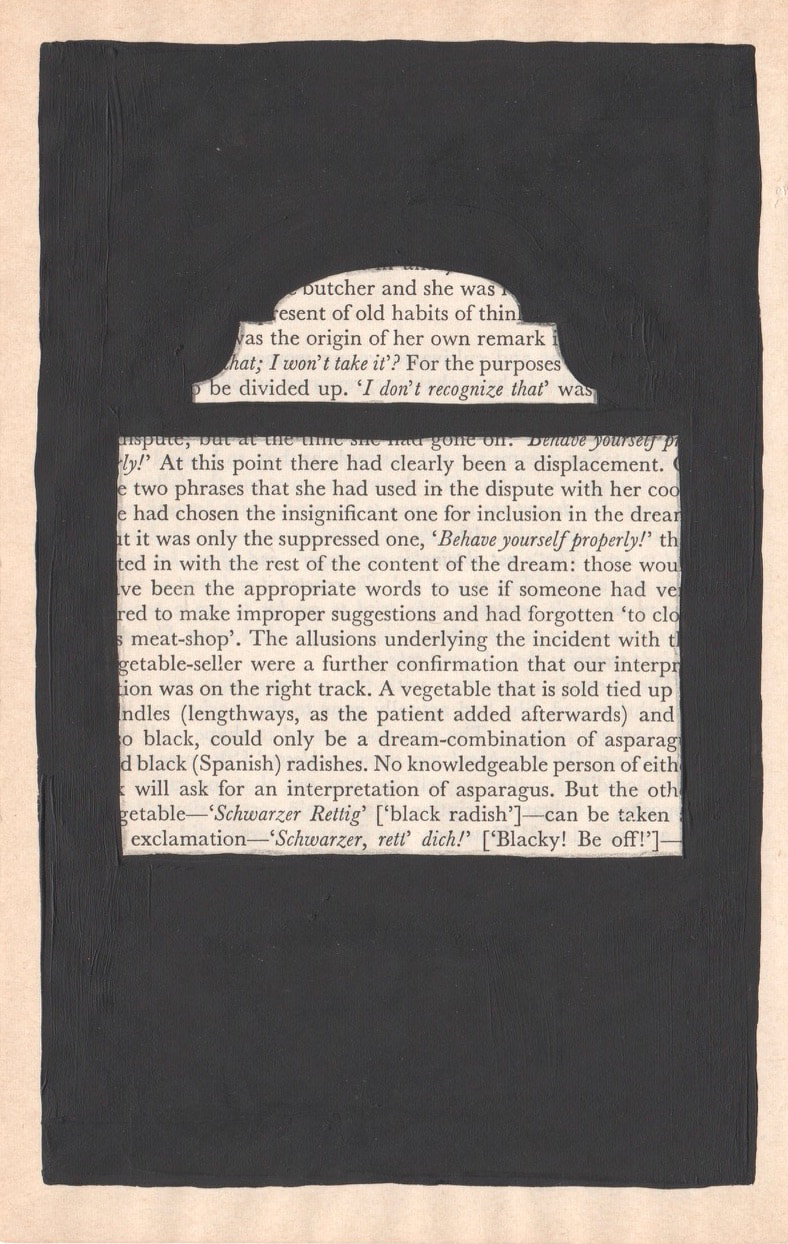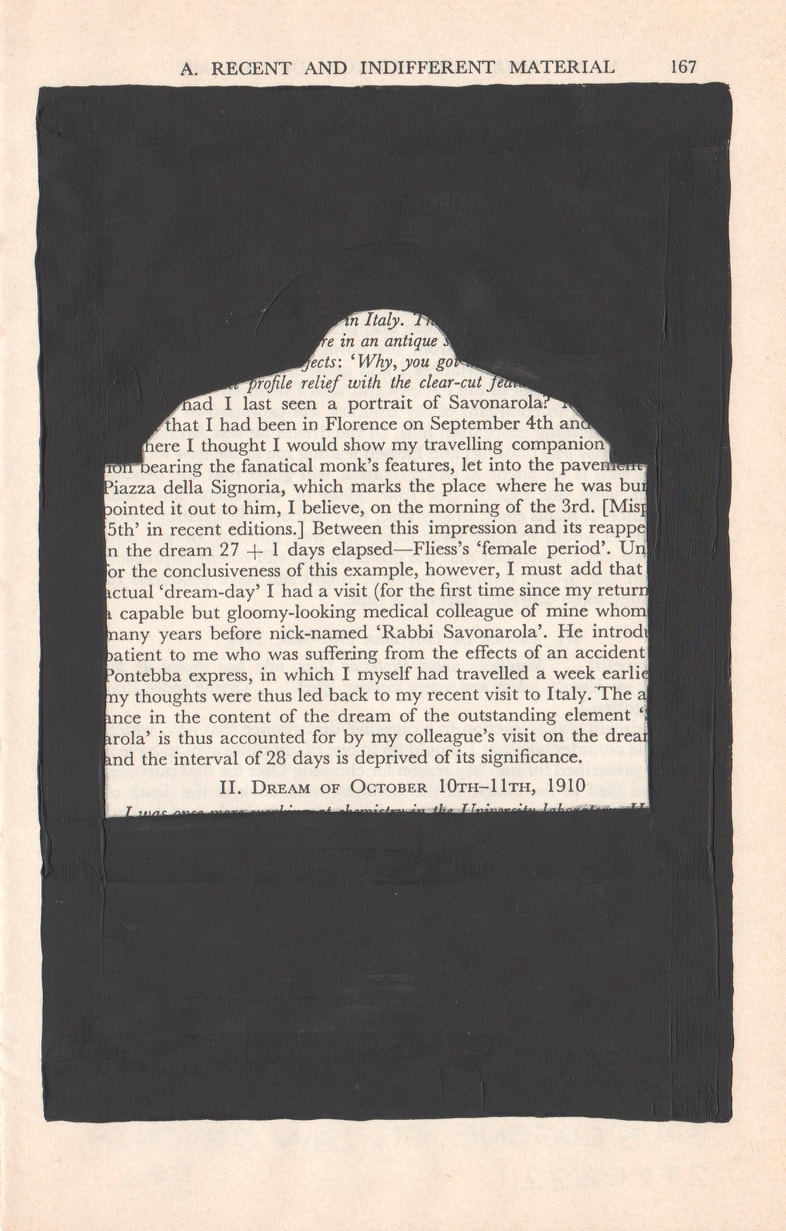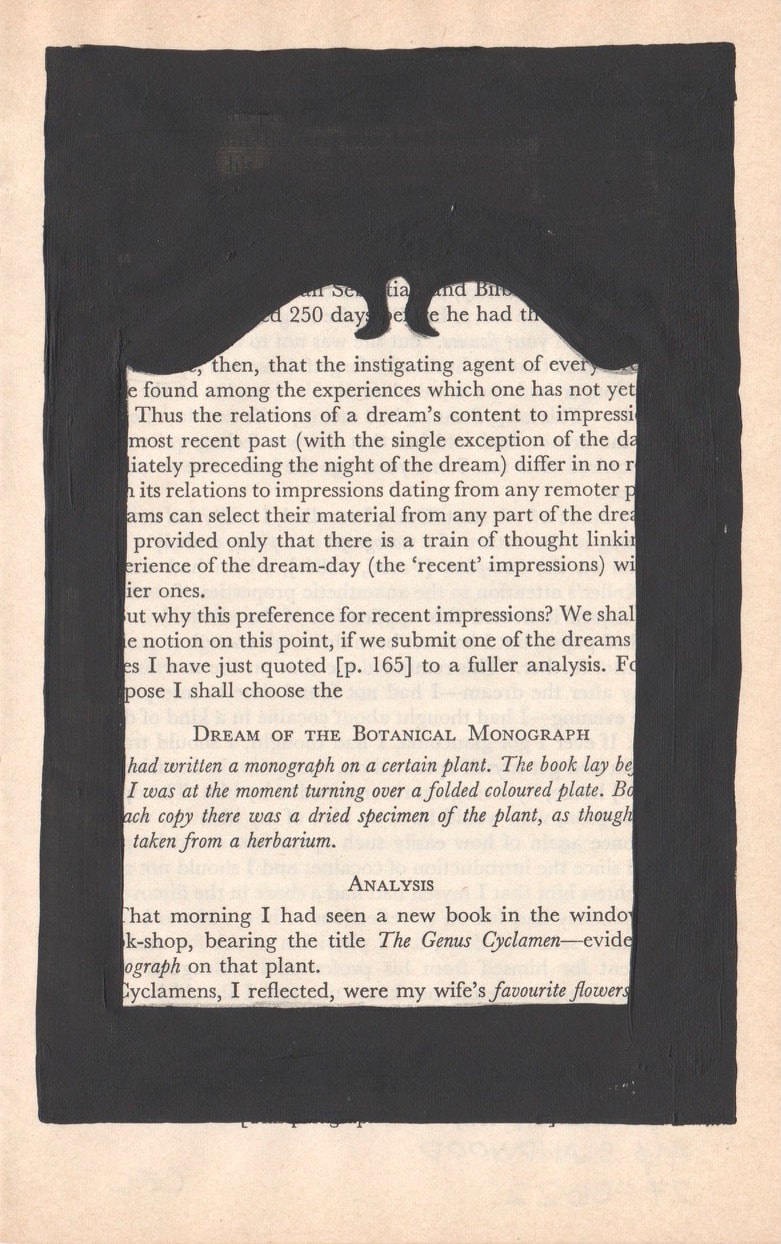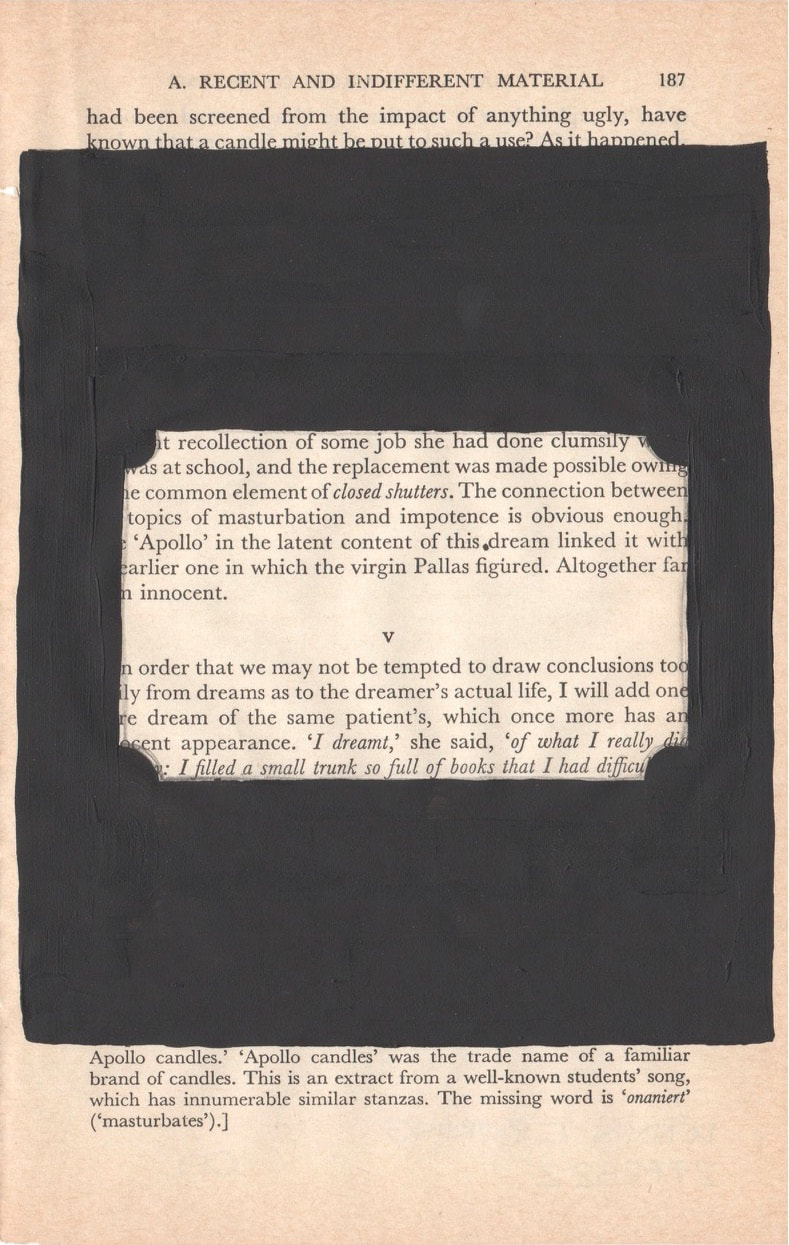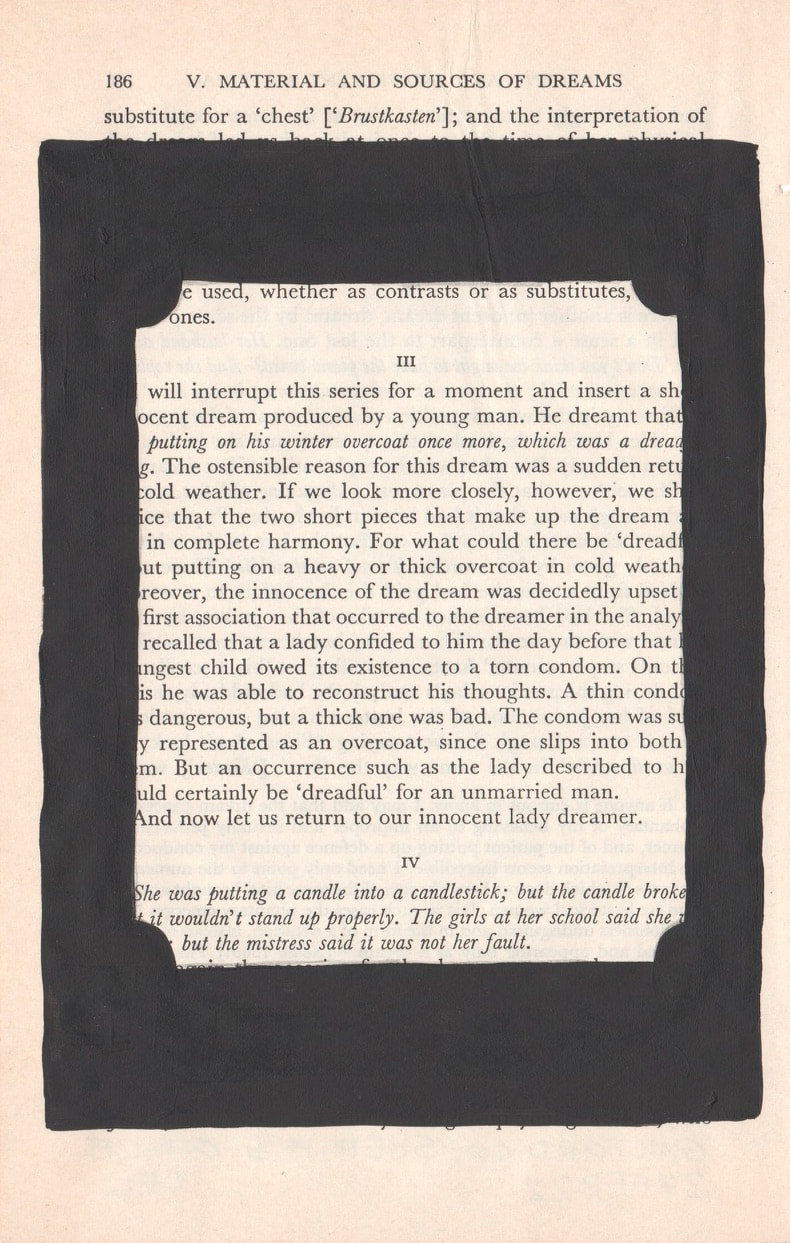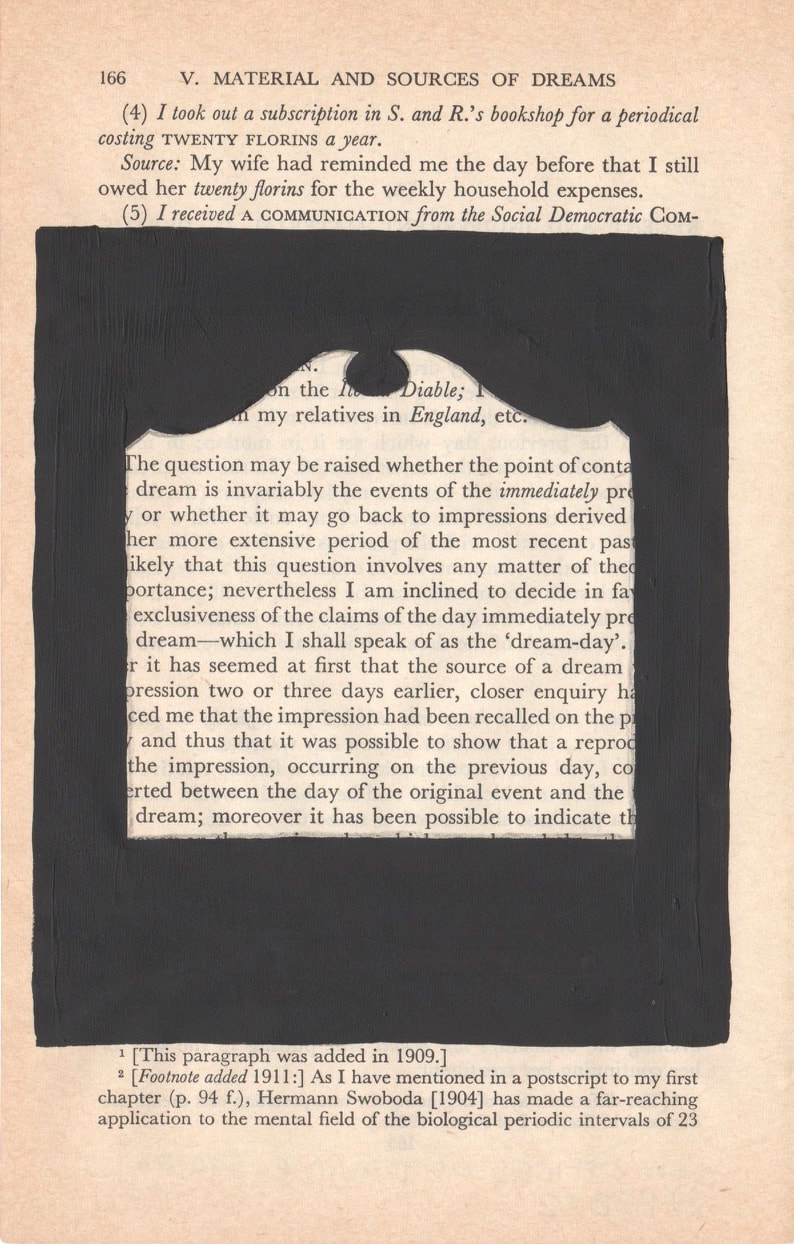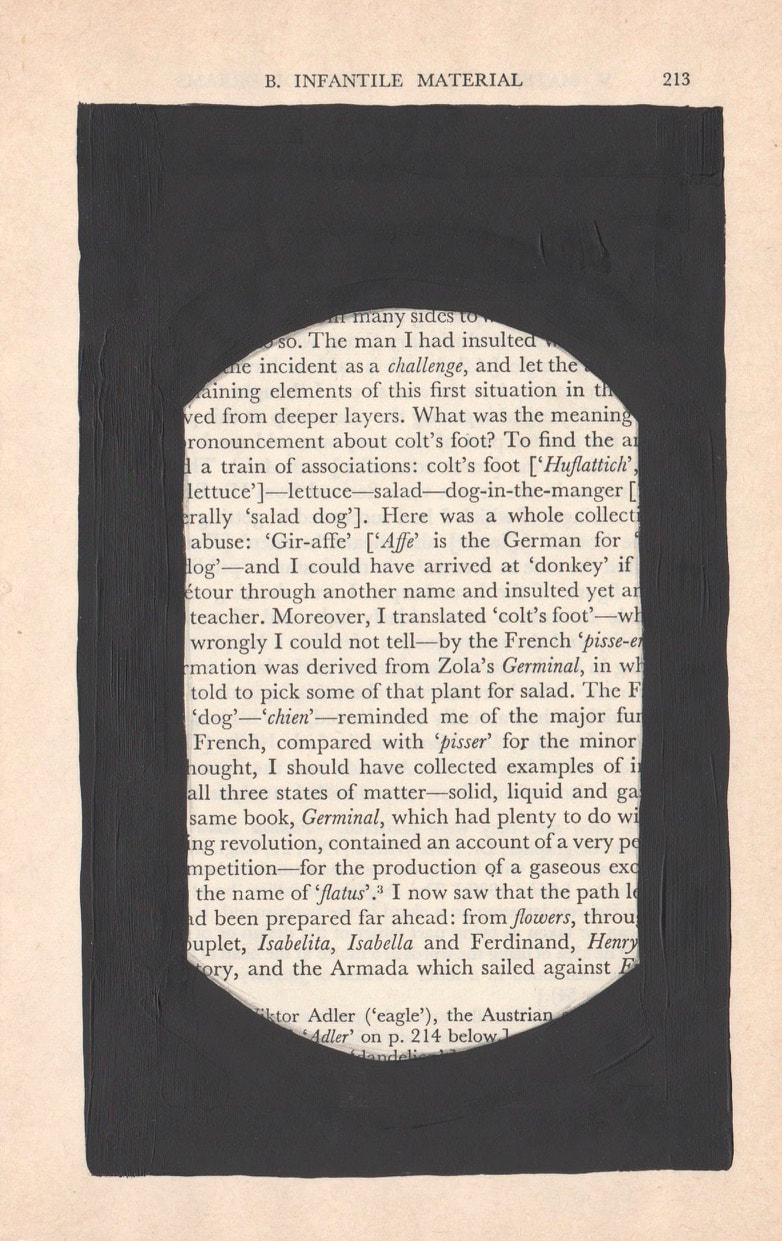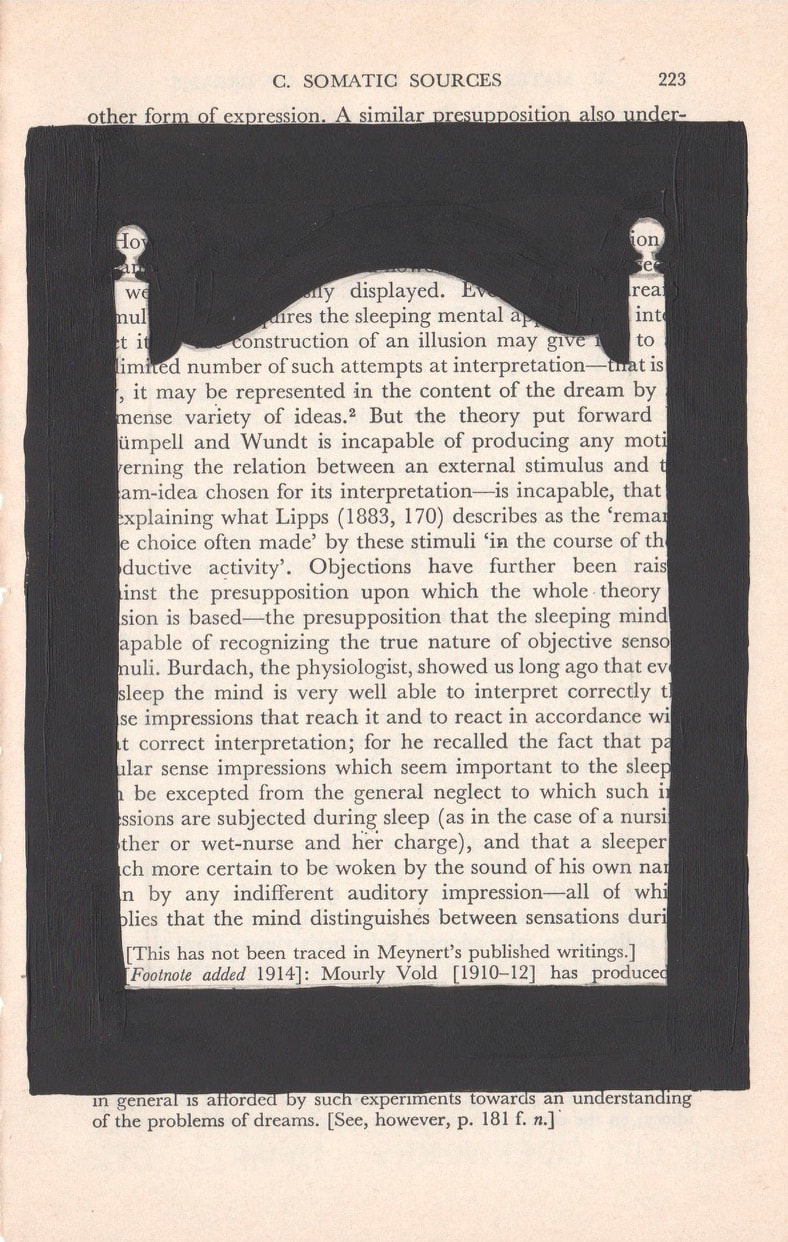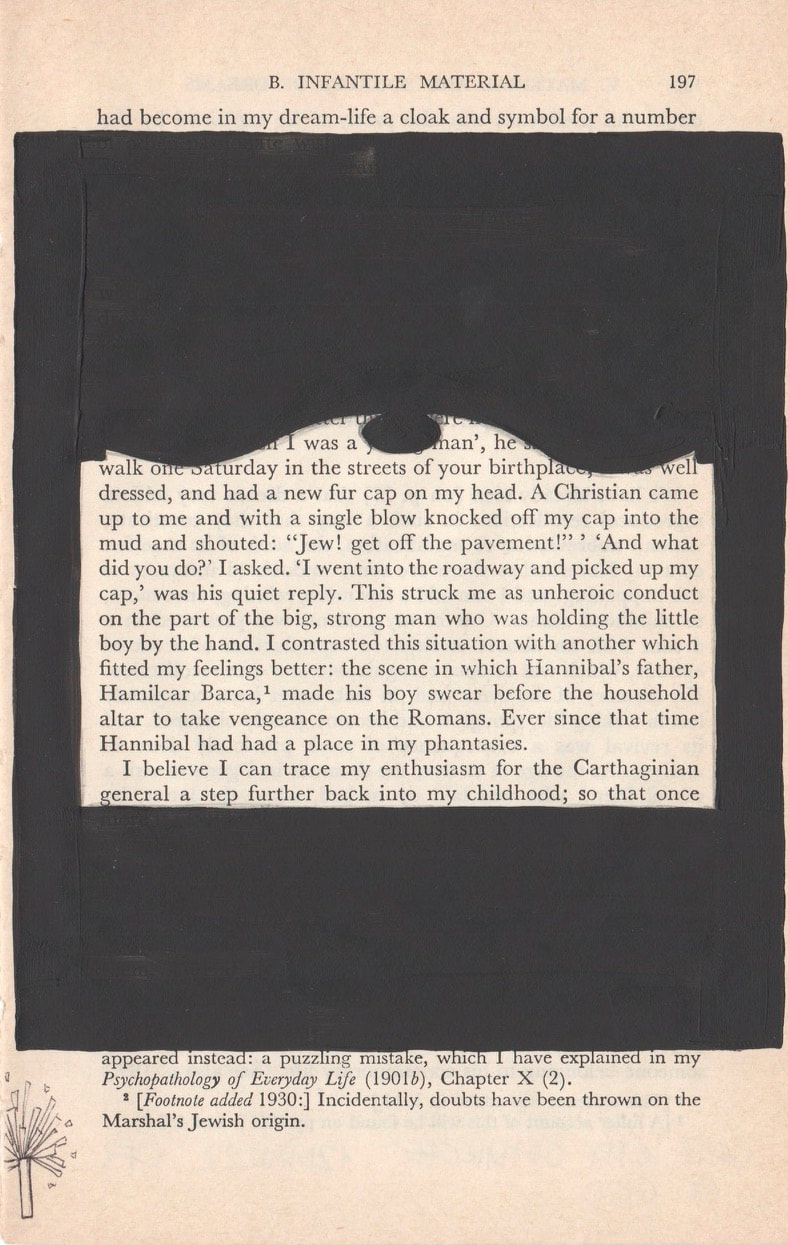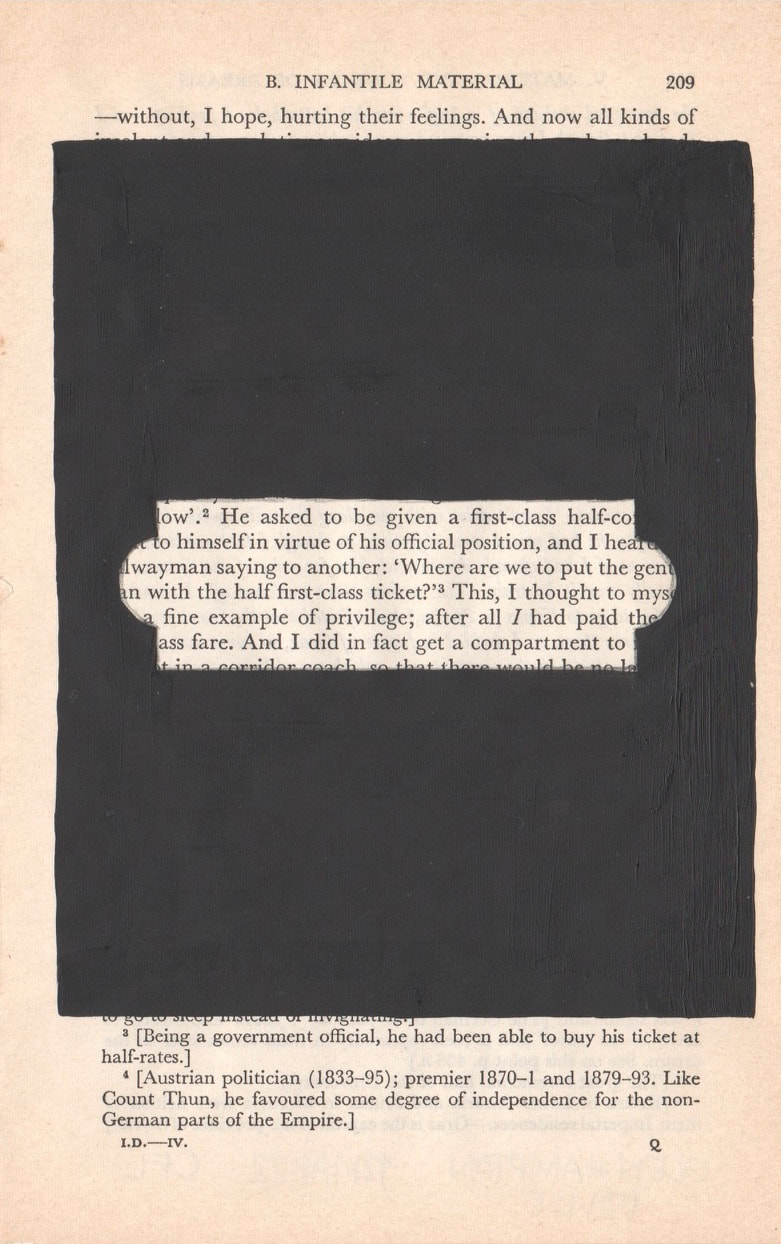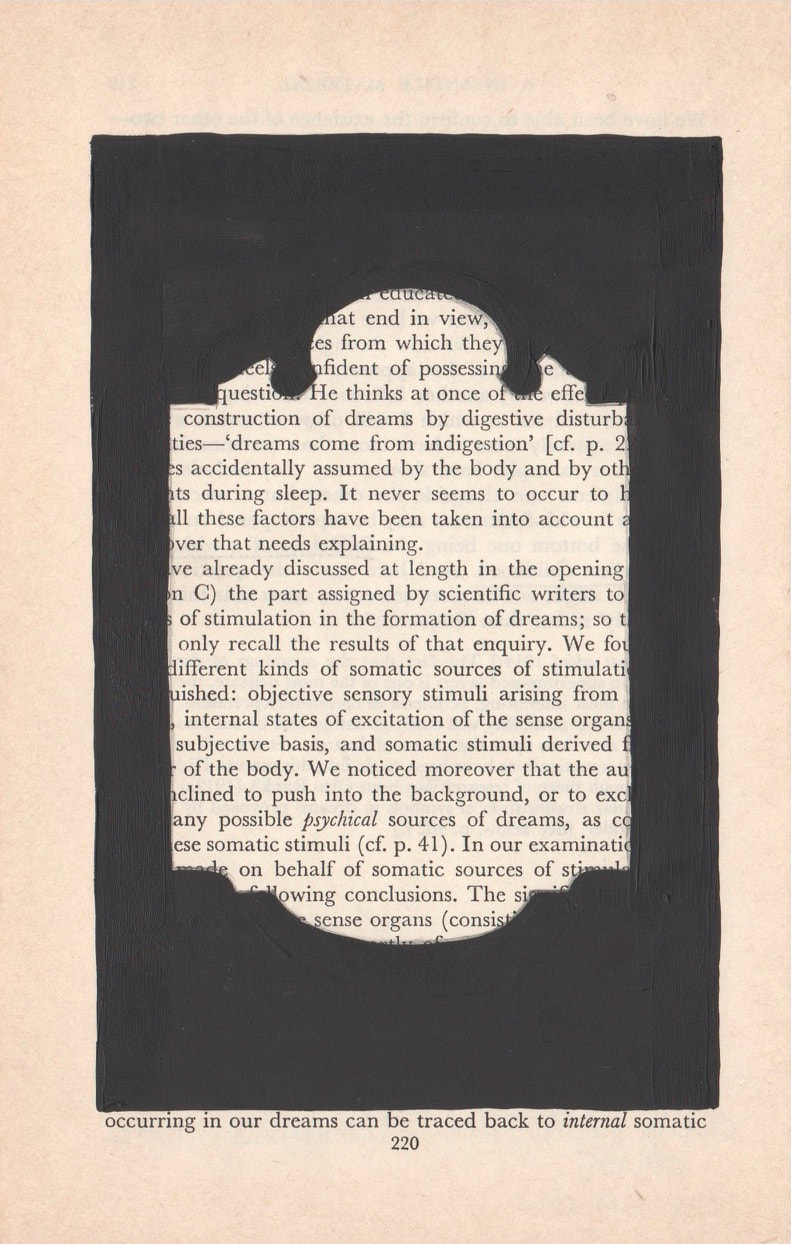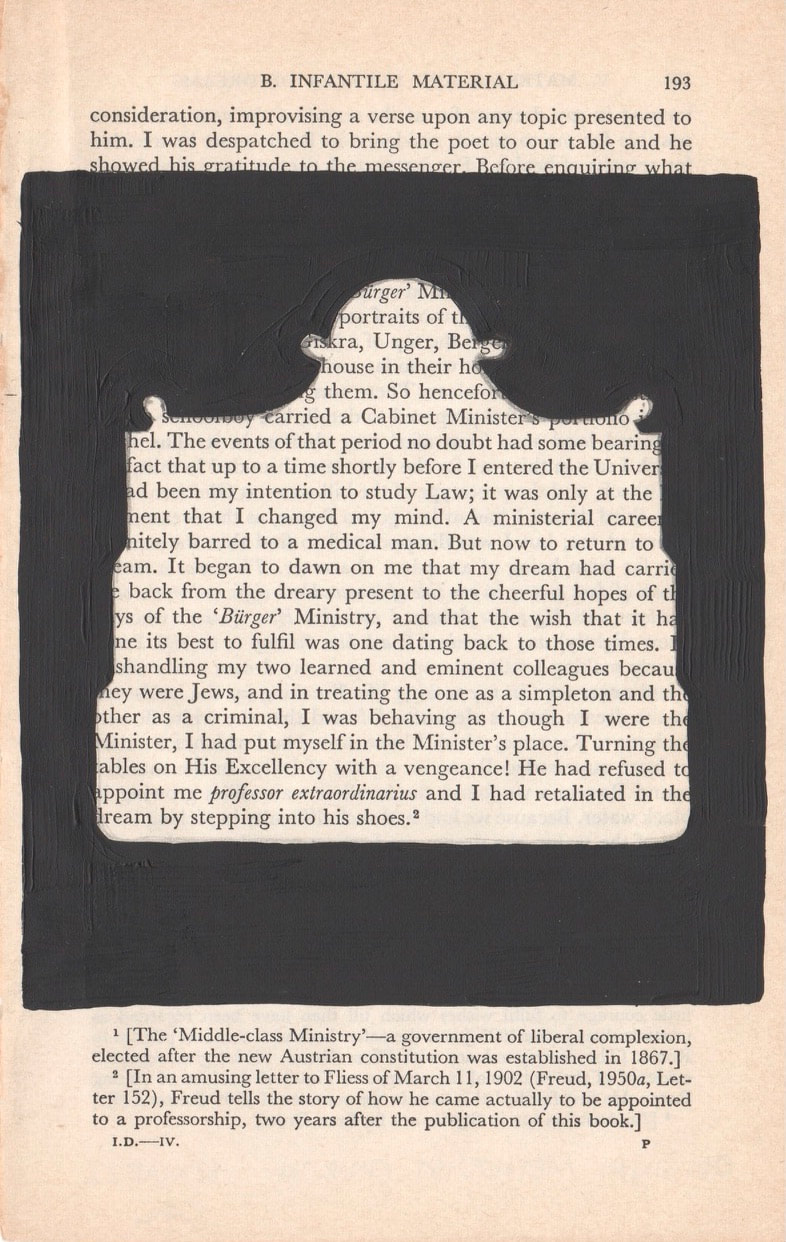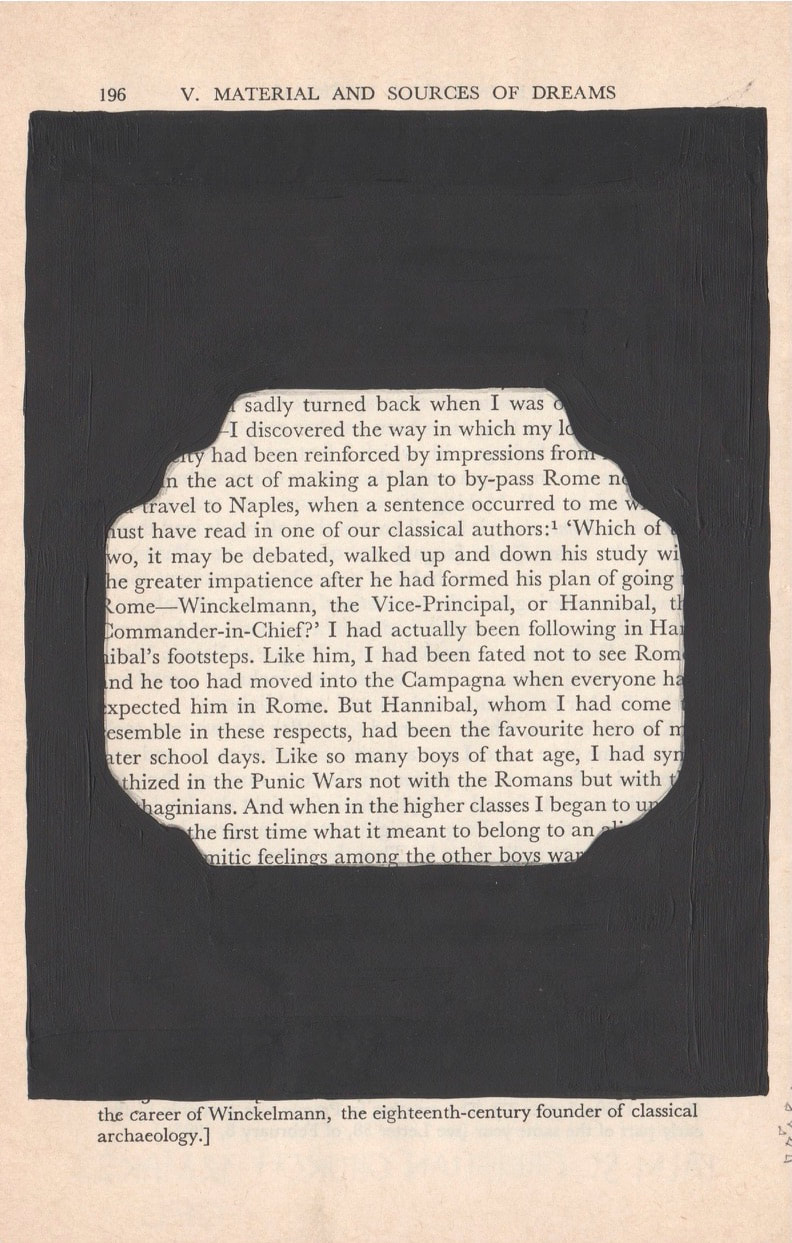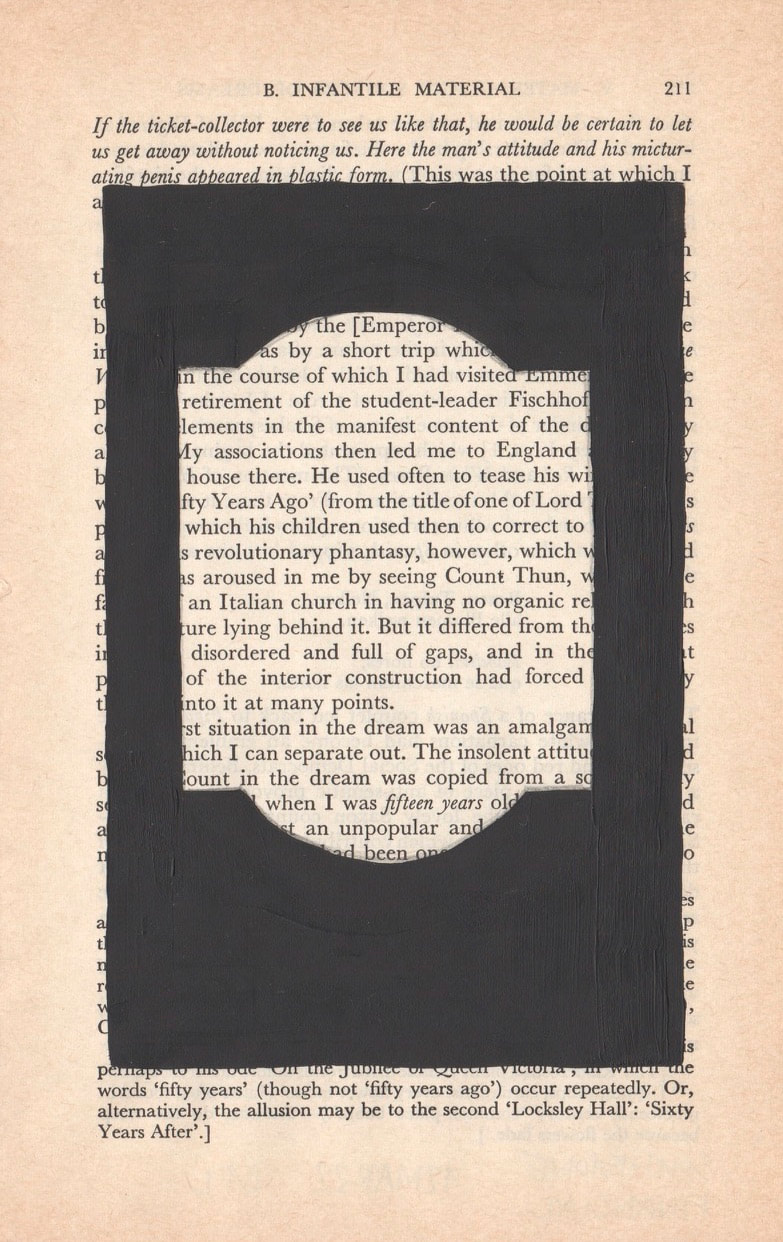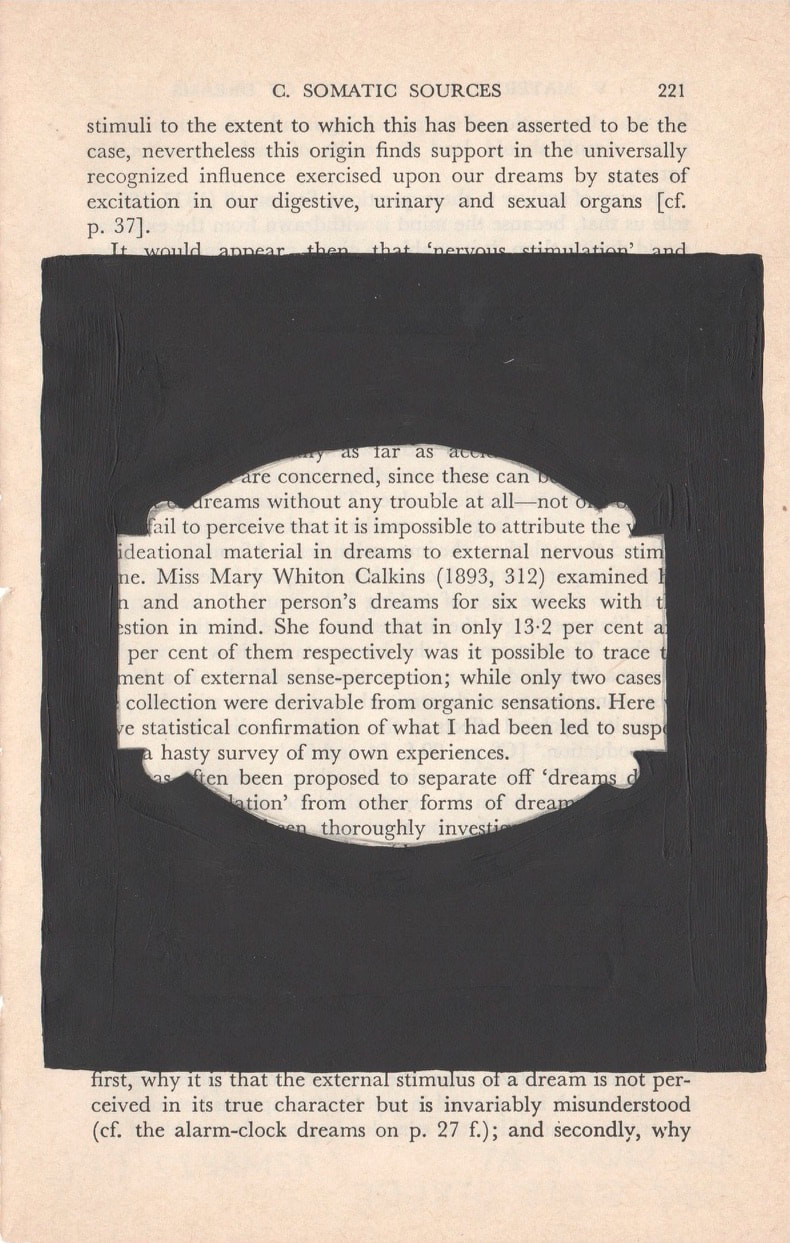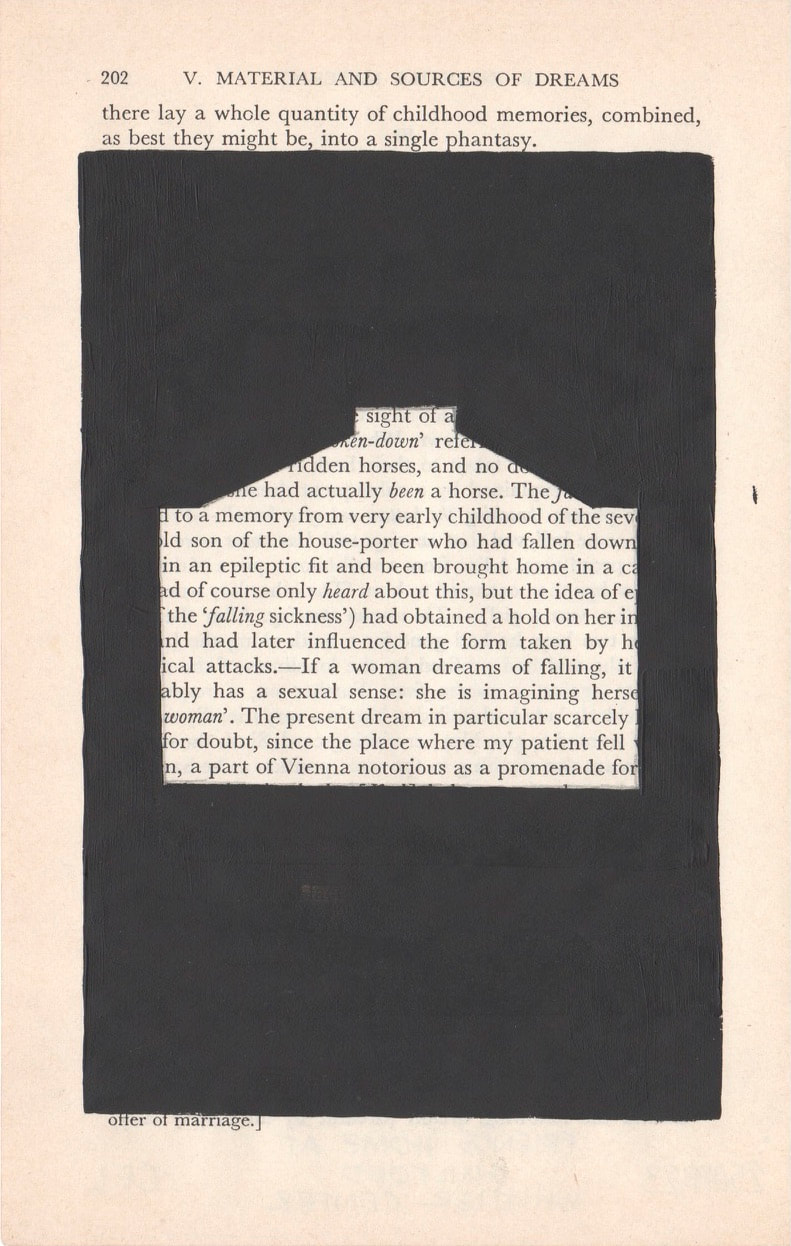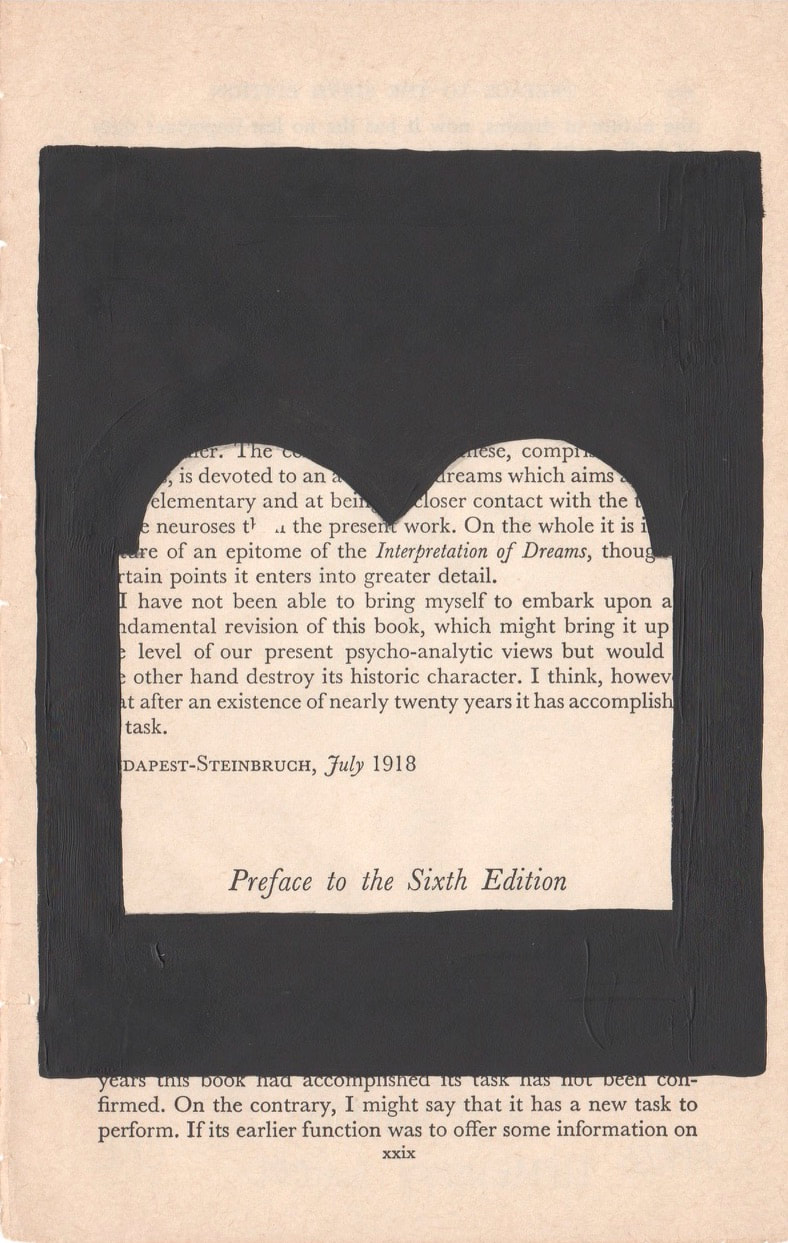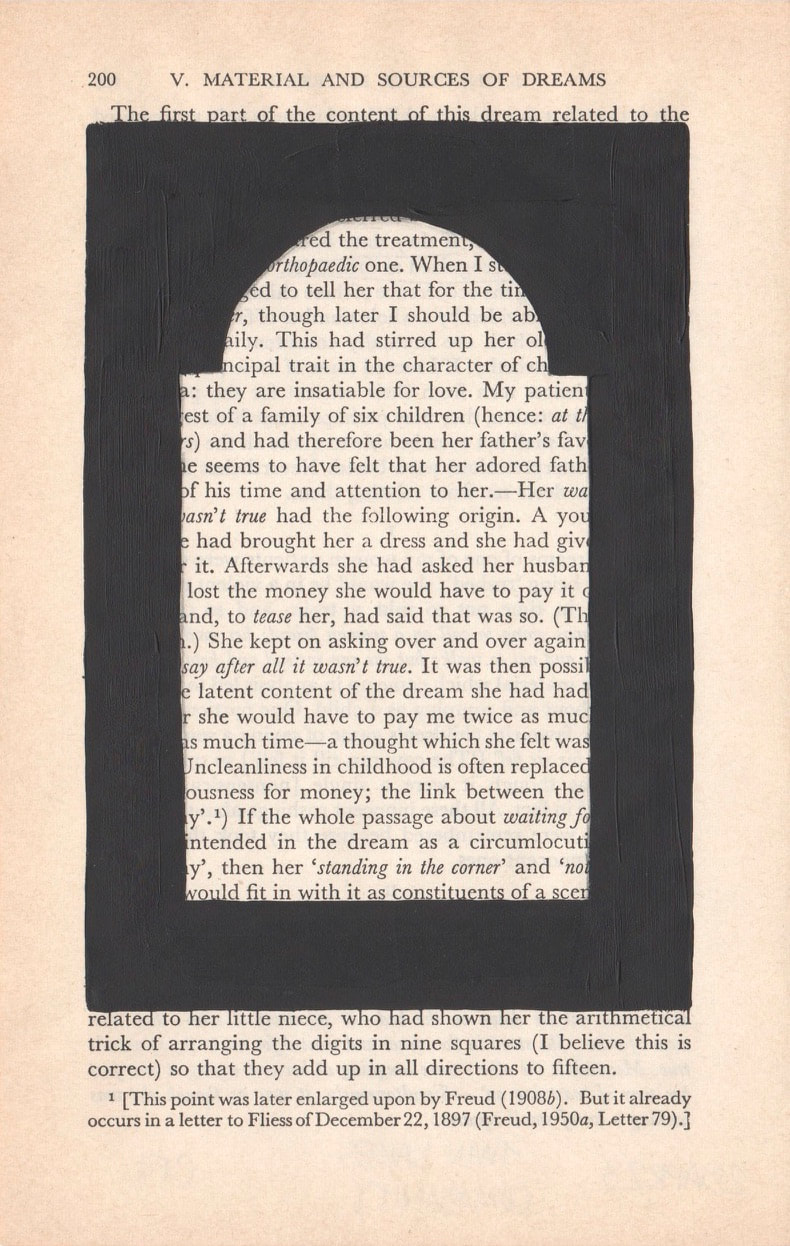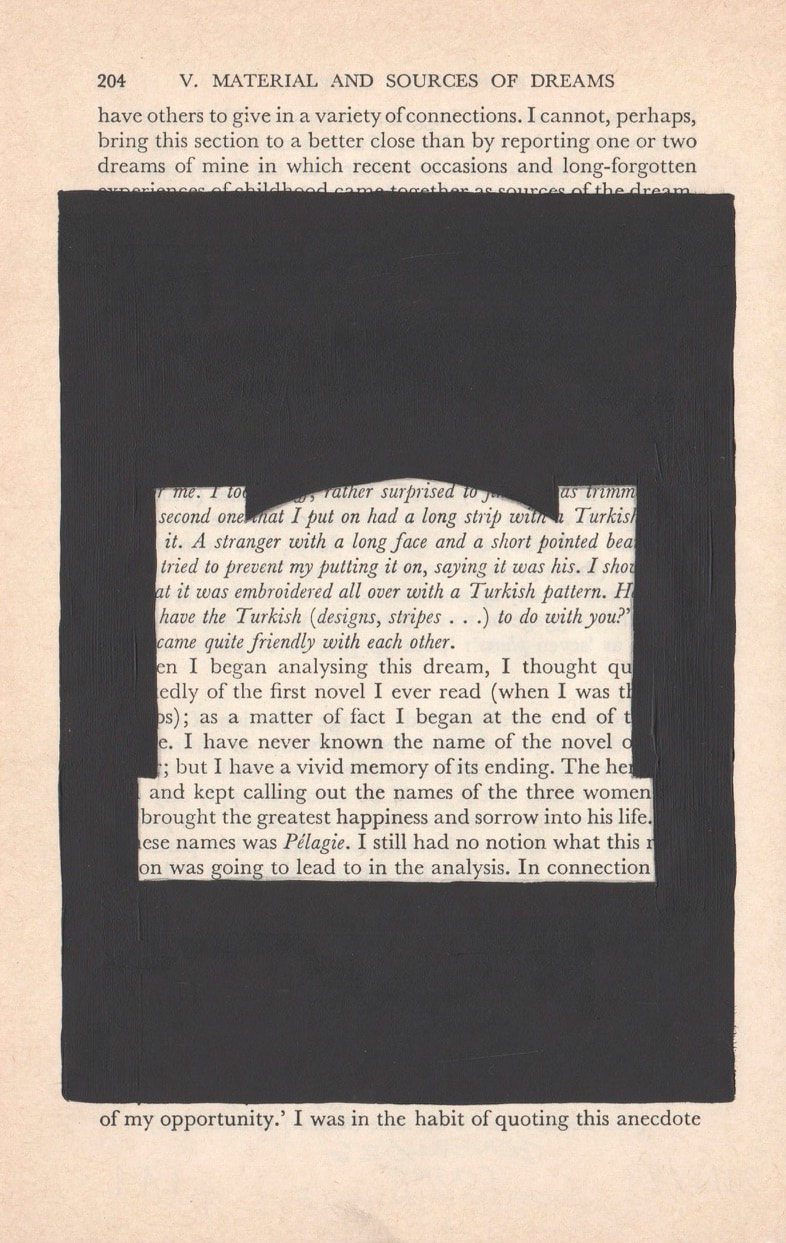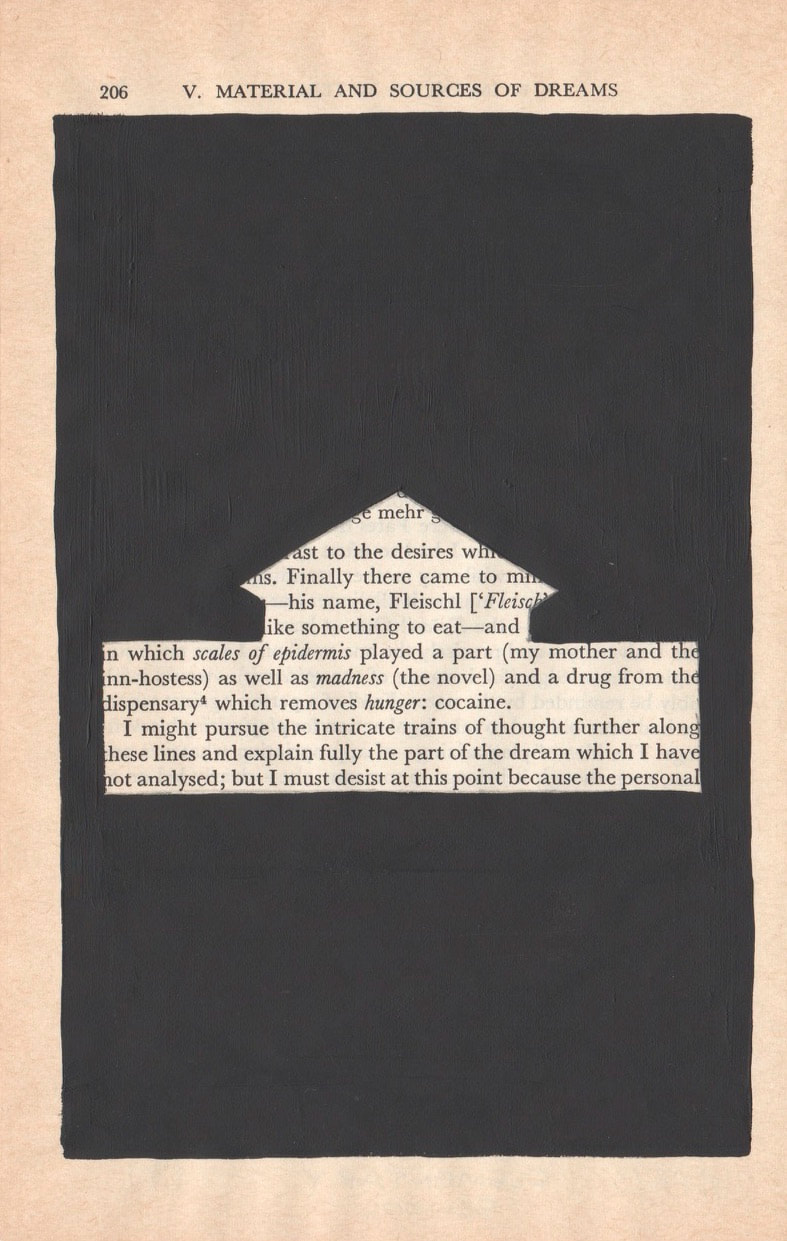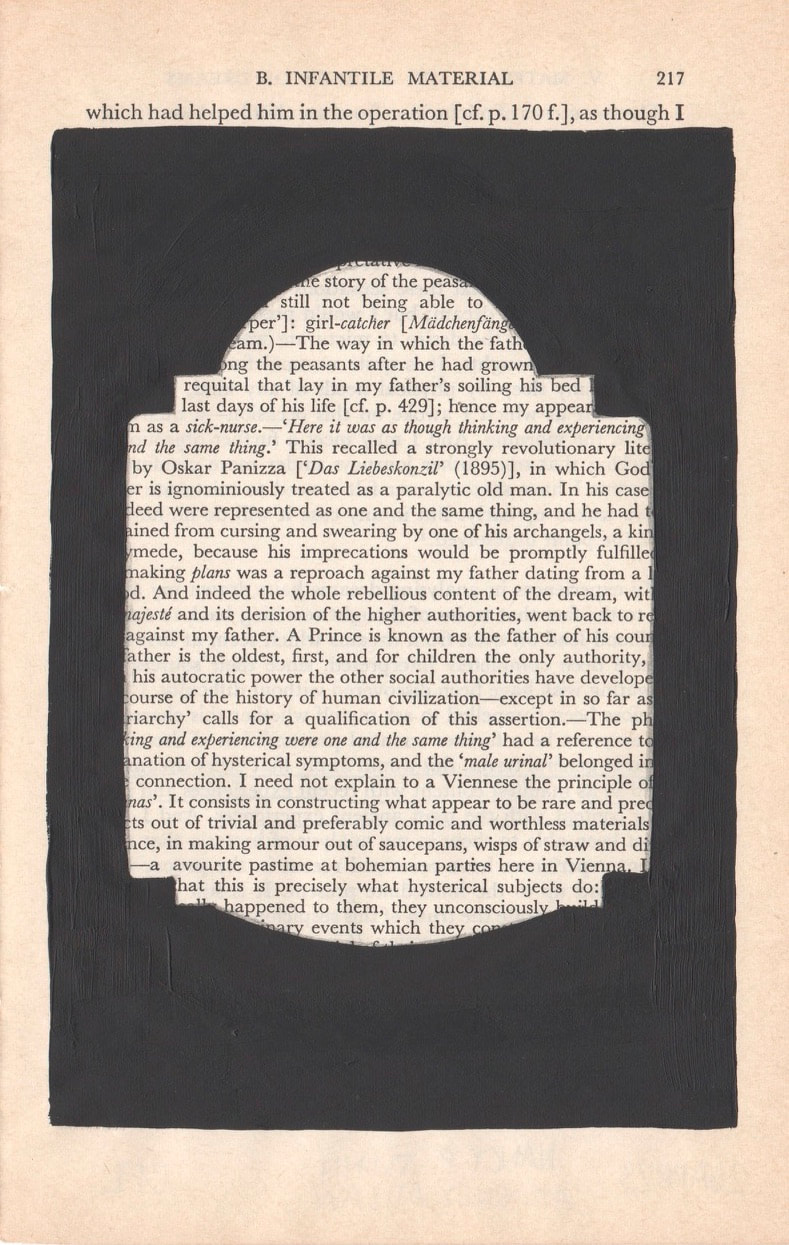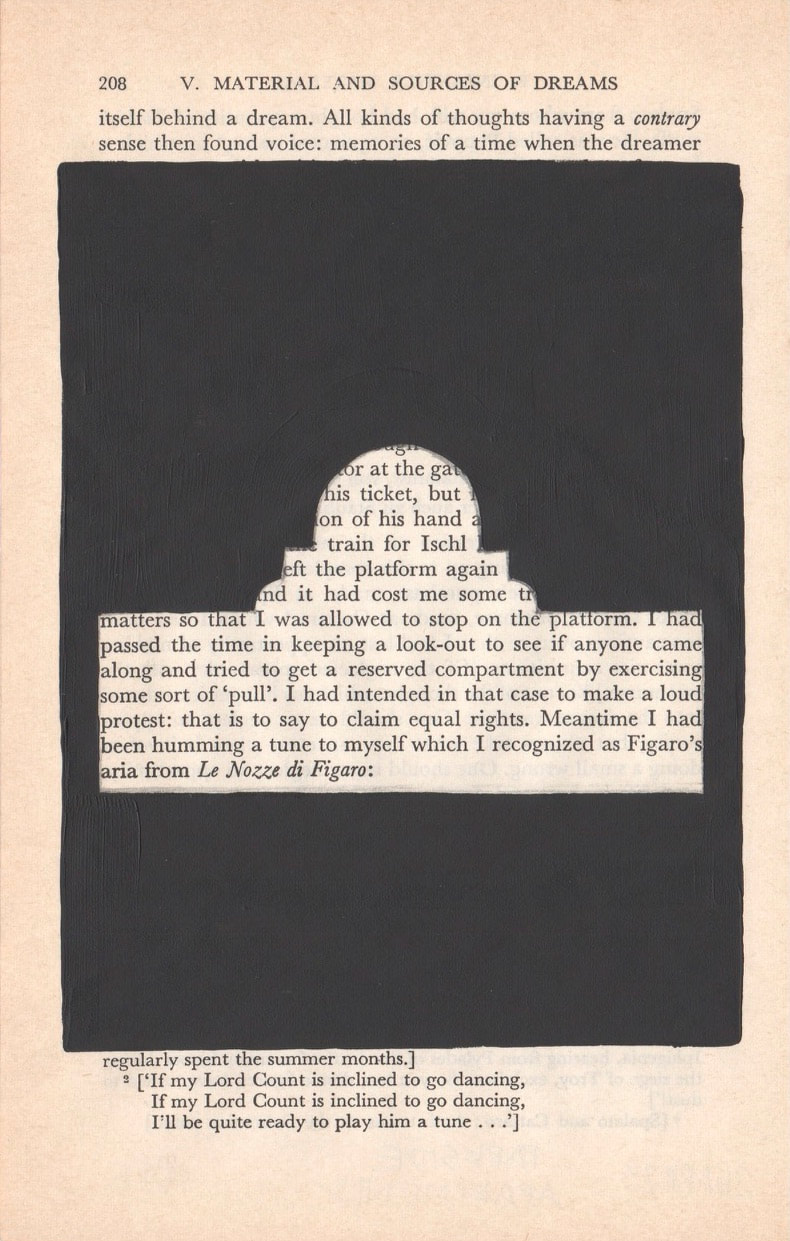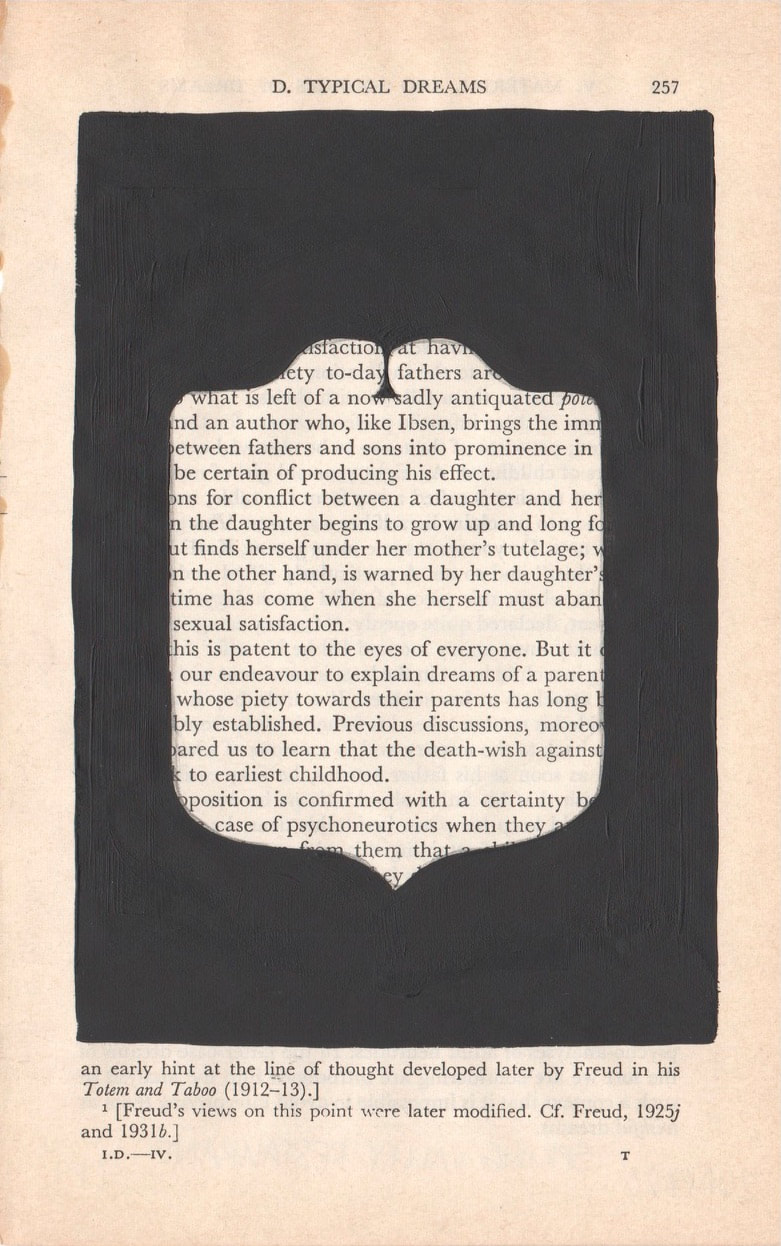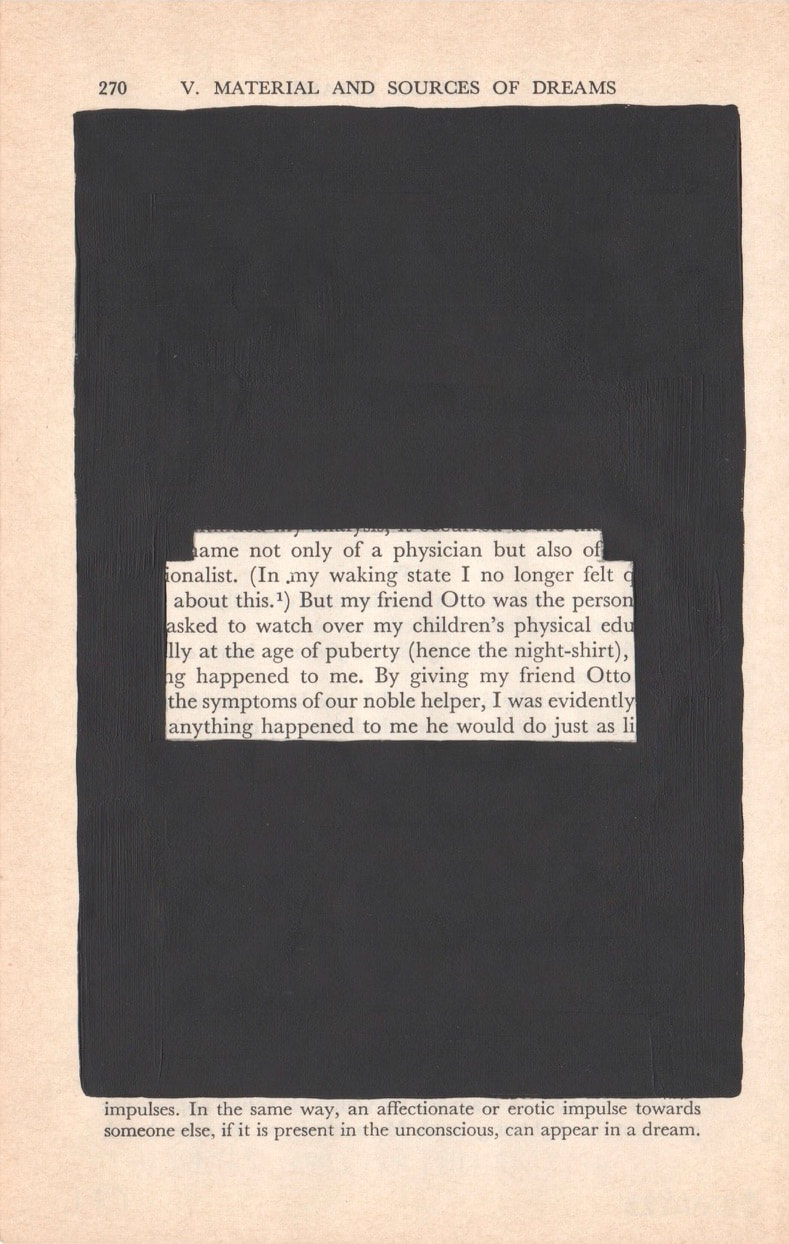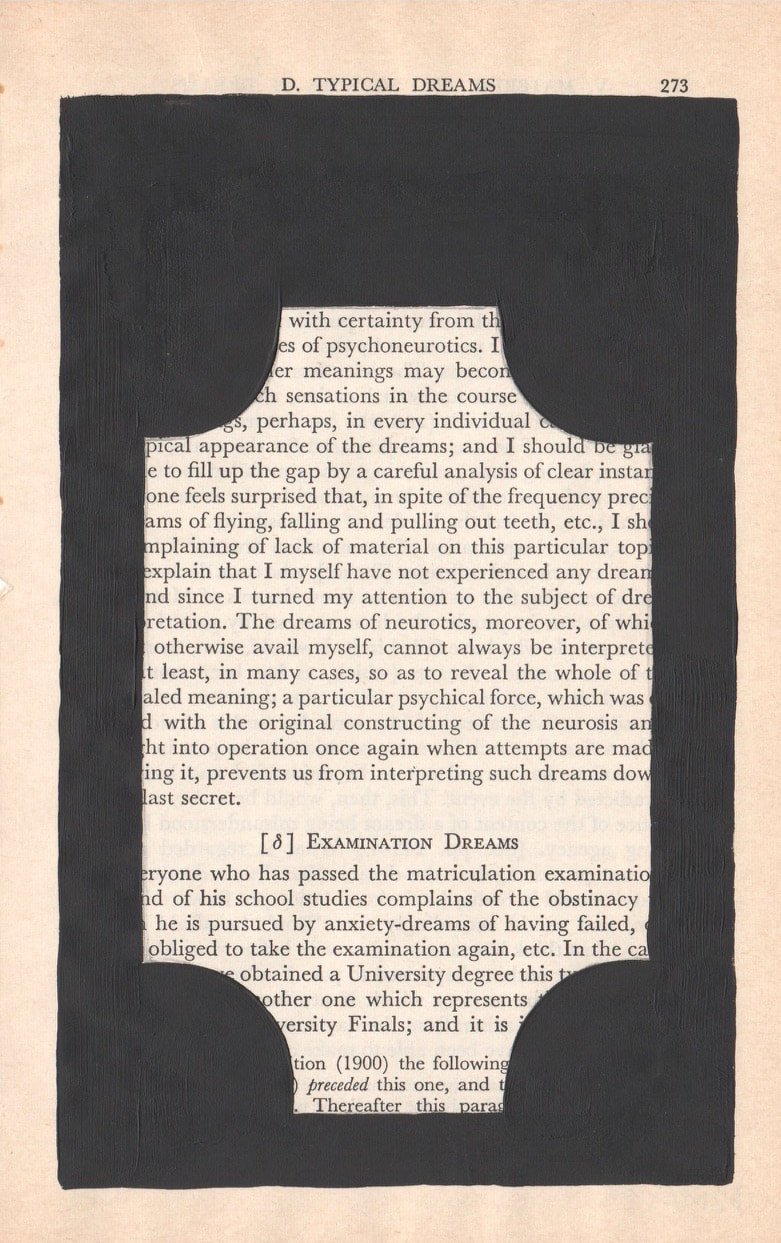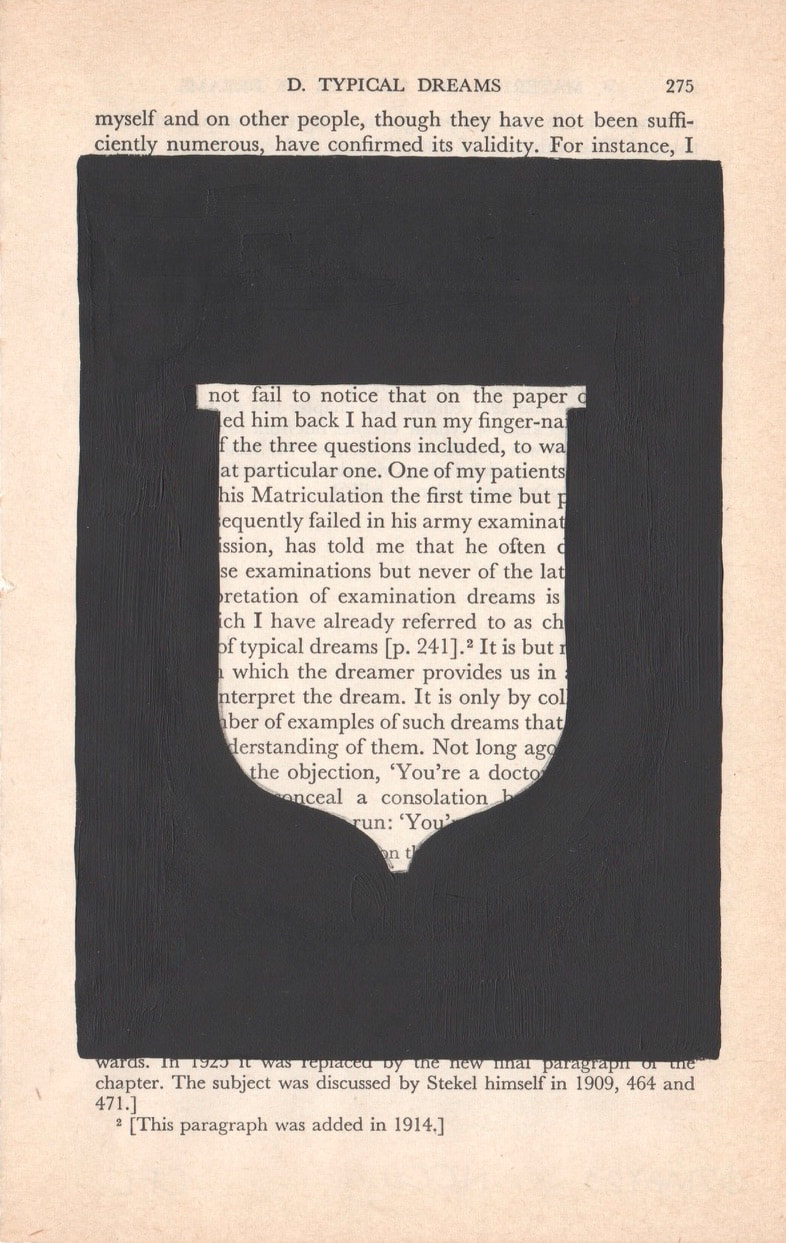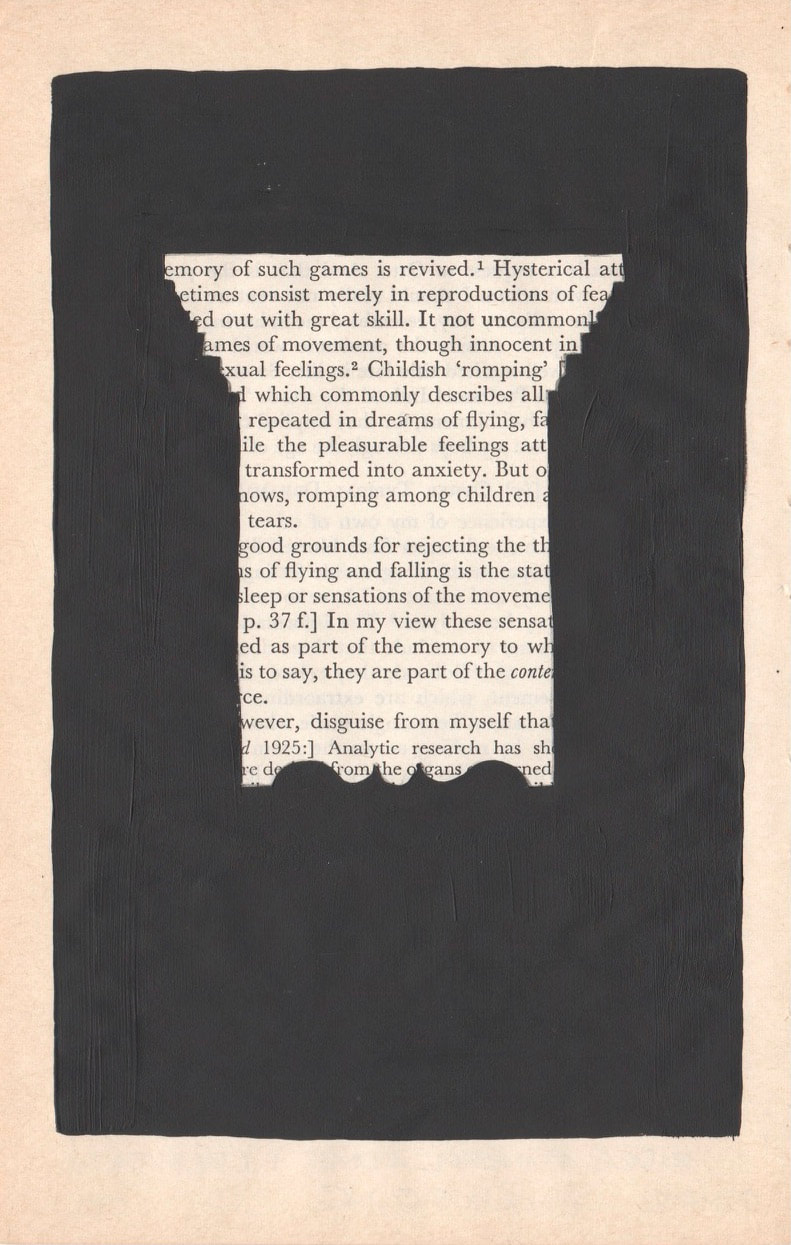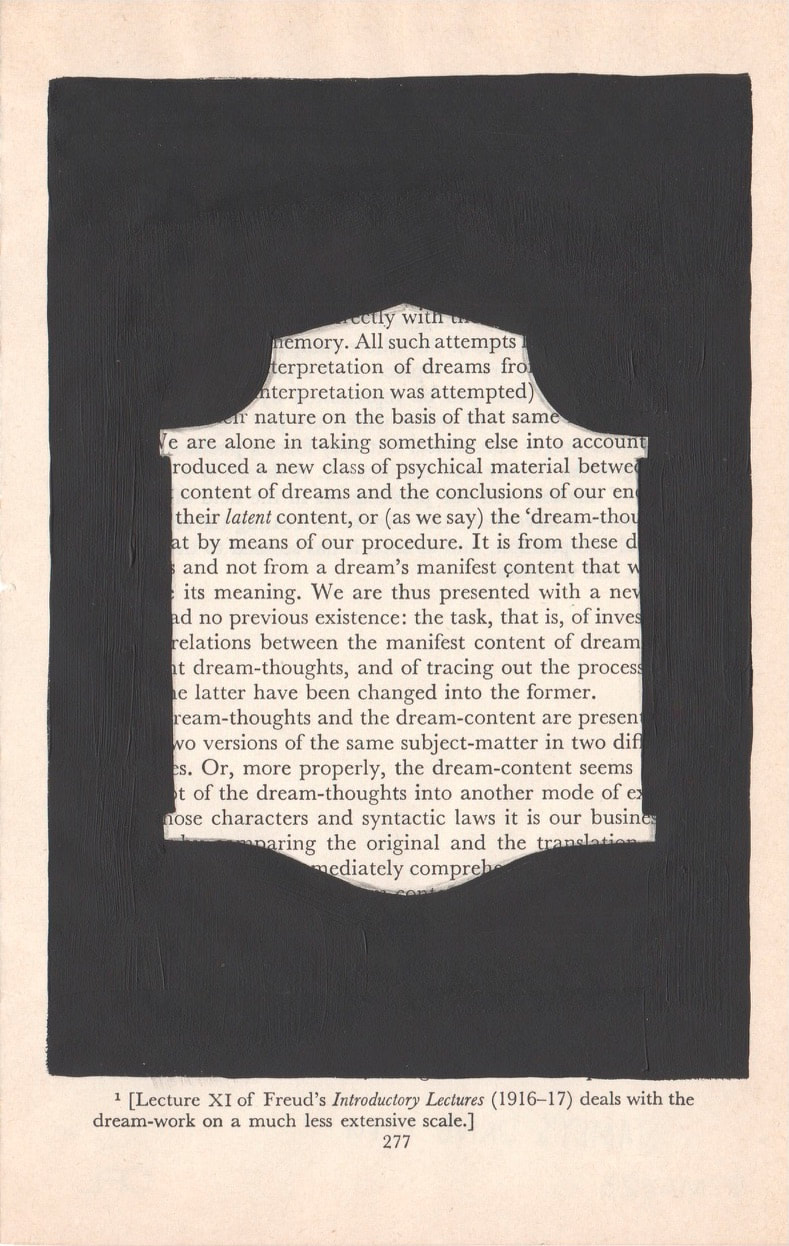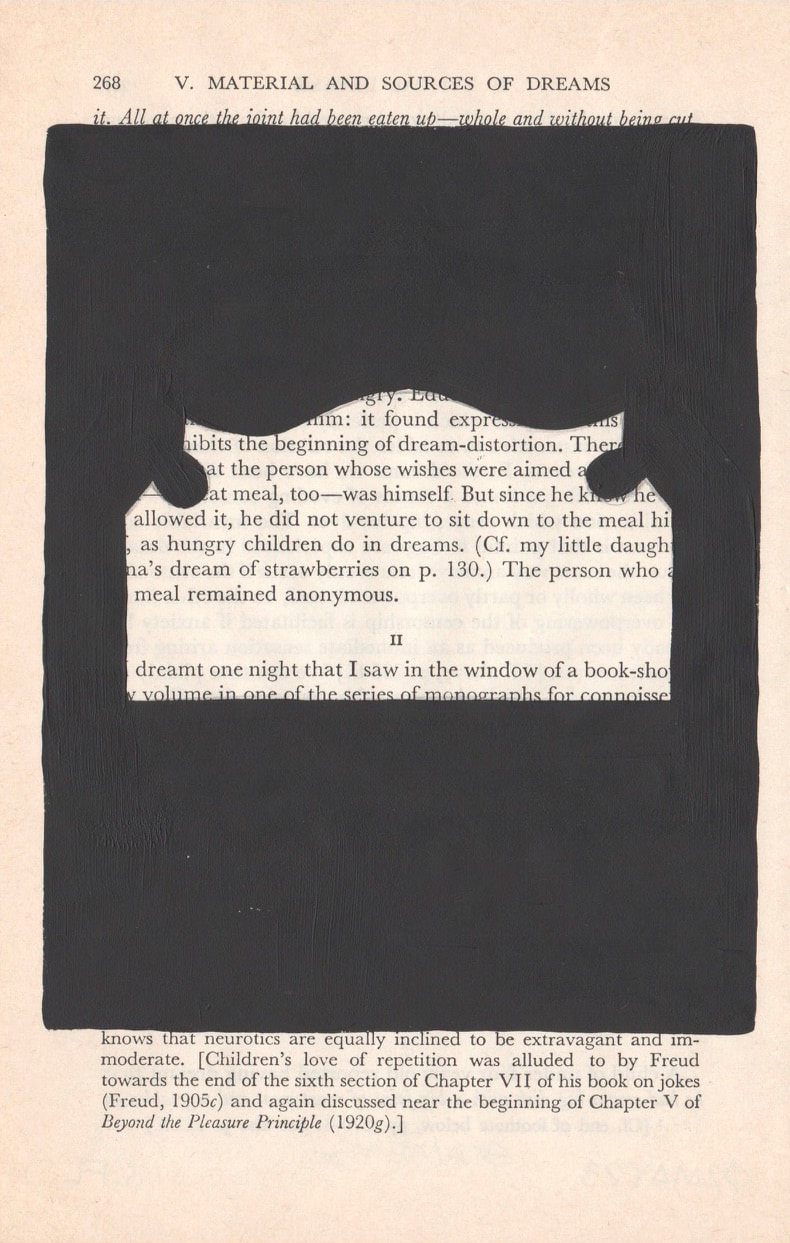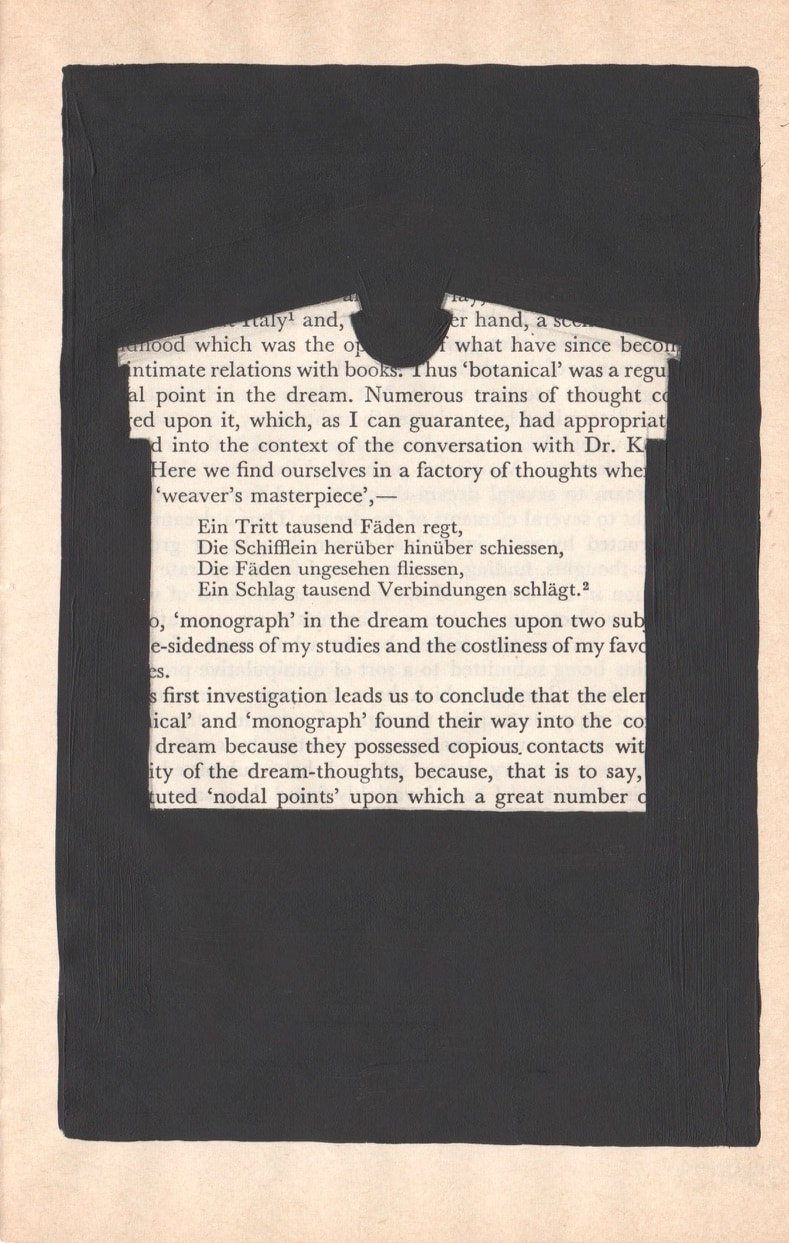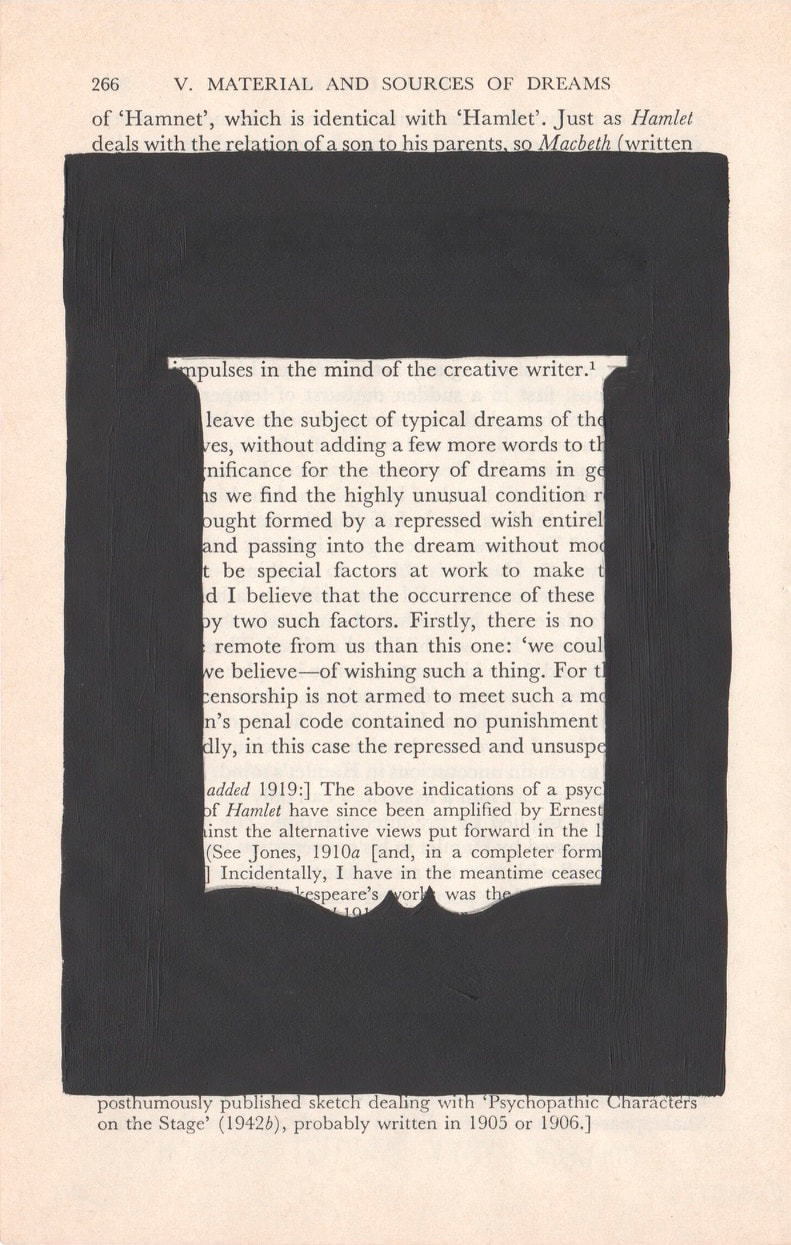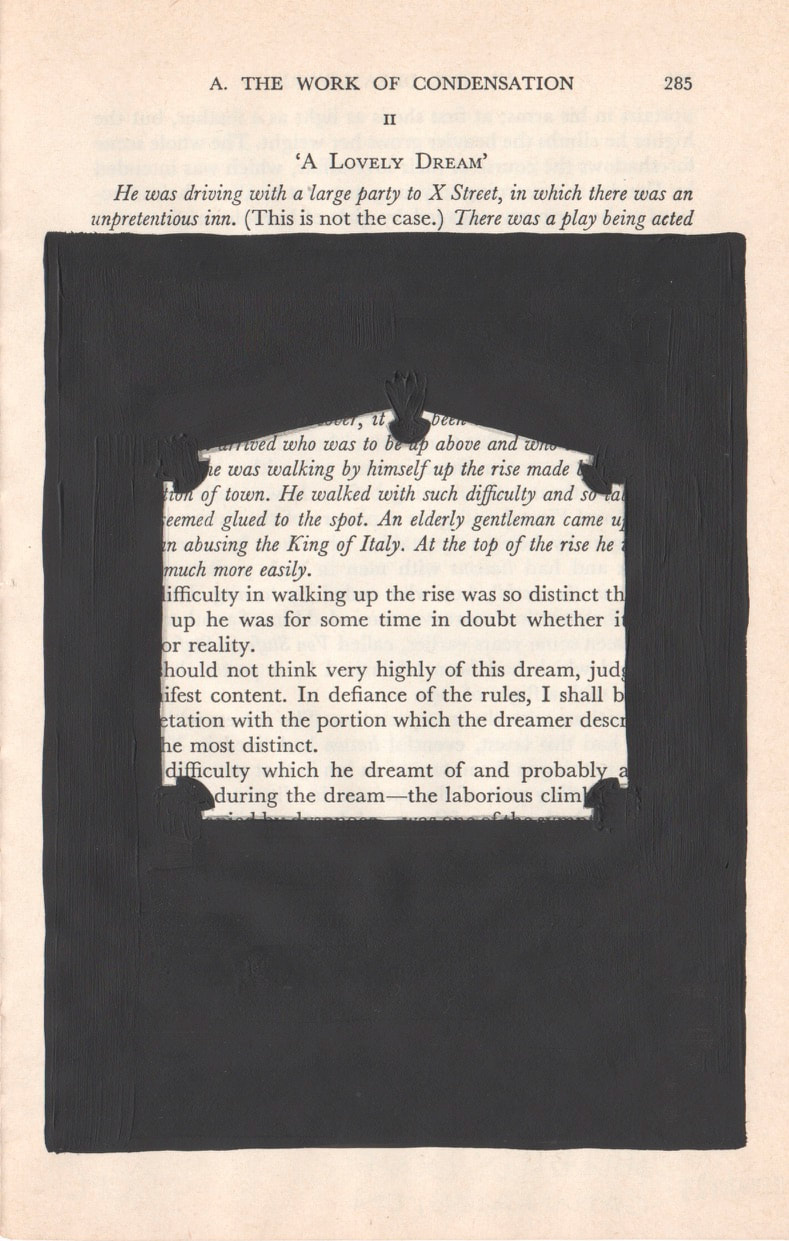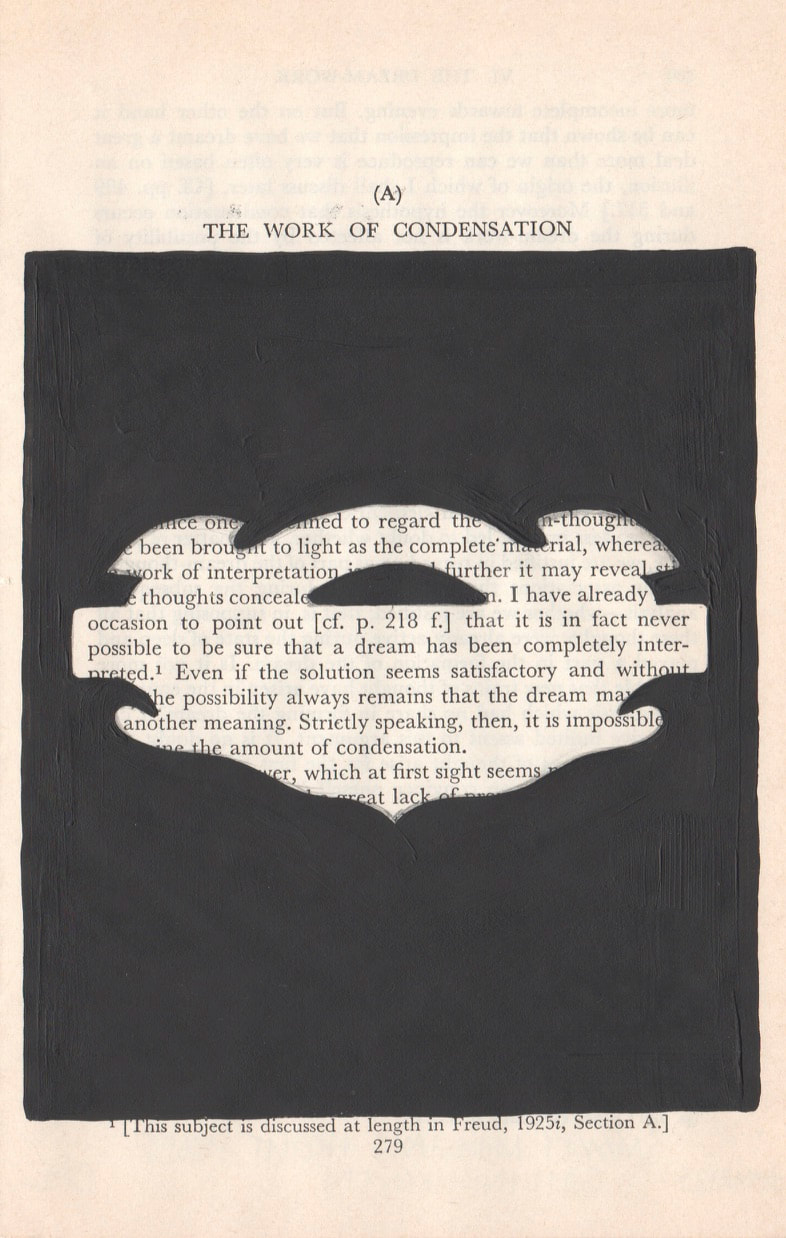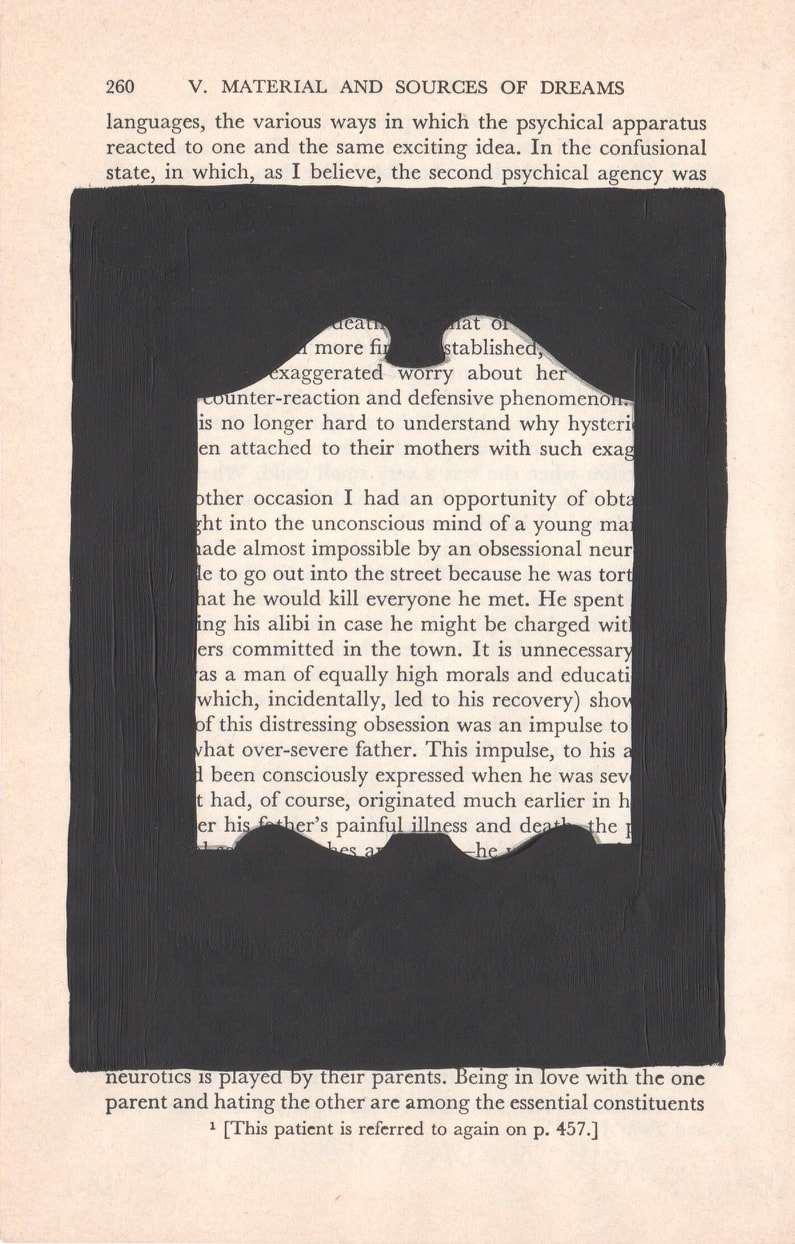IT'S A SIGN
For the past 6 years, I’ve been using the cotton-paper pages of my 1963 printing of Interpretation of Dreams by Sigmund Freud as the background for paintings and drawings. When I’ve displayed these works, I’ve frequently noticed viewers spending extra time reading the text on the page, presumably in an attempt to make meaning from the words combined with the imagery I created, despite the fact that absolutely no thought goes into the selection of the pages before I use them.
As humans we are pattern-seekers. When our life experiences are unexplainable, we look for signs in nature, from stories, from bones, tea, Tarot, slips of paper baked into cookies, the alignment of the stars - and, as with Dr. Freud, our dreams.
We also use signs to communicate concrete meaning - for example: names, locations, and societal expectations. With their often elaborate silhouettes the shapes of signs contribute to the visual experience and feel of a place. This series, IT’S A SIGN, is at once a documentation of the unique sign shapes I have found in my small adventures, and a tongue-in-cheek criticism of our human tendency to seek meaning in that which is merely coincidental.
As humans we are pattern-seekers. When our life experiences are unexplainable, we look for signs in nature, from stories, from bones, tea, Tarot, slips of paper baked into cookies, the alignment of the stars - and, as with Dr. Freud, our dreams.
We also use signs to communicate concrete meaning - for example: names, locations, and societal expectations. With their often elaborate silhouettes the shapes of signs contribute to the visual experience and feel of a place. This series, IT’S A SIGN, is at once a documentation of the unique sign shapes I have found in my small adventures, and a tongue-in-cheek criticism of our human tendency to seek meaning in that which is merely coincidental.
